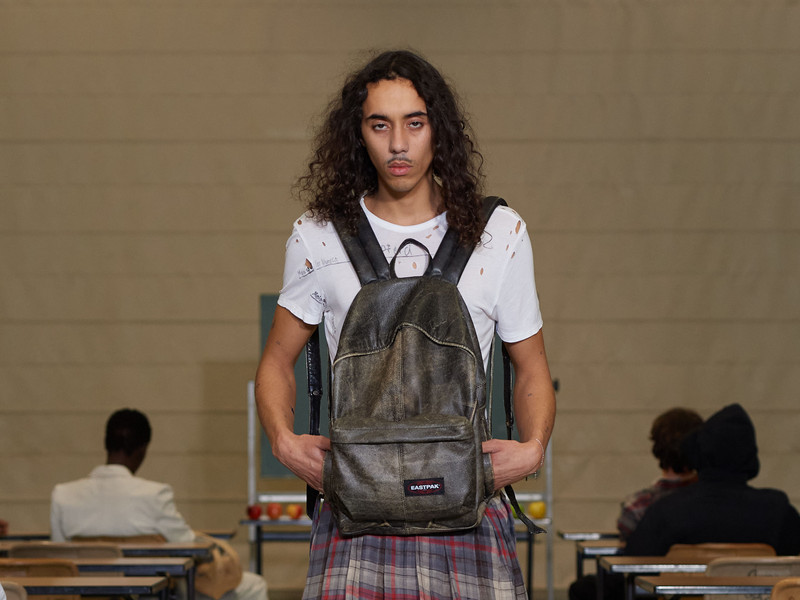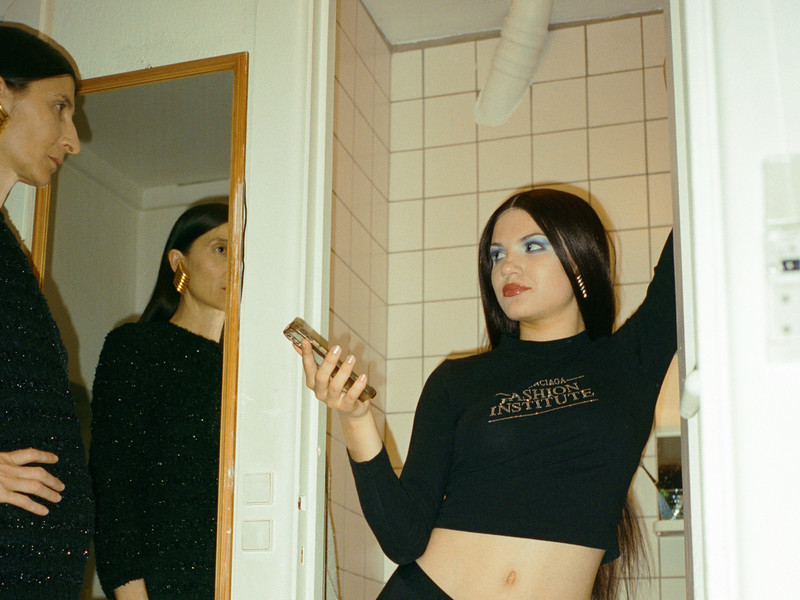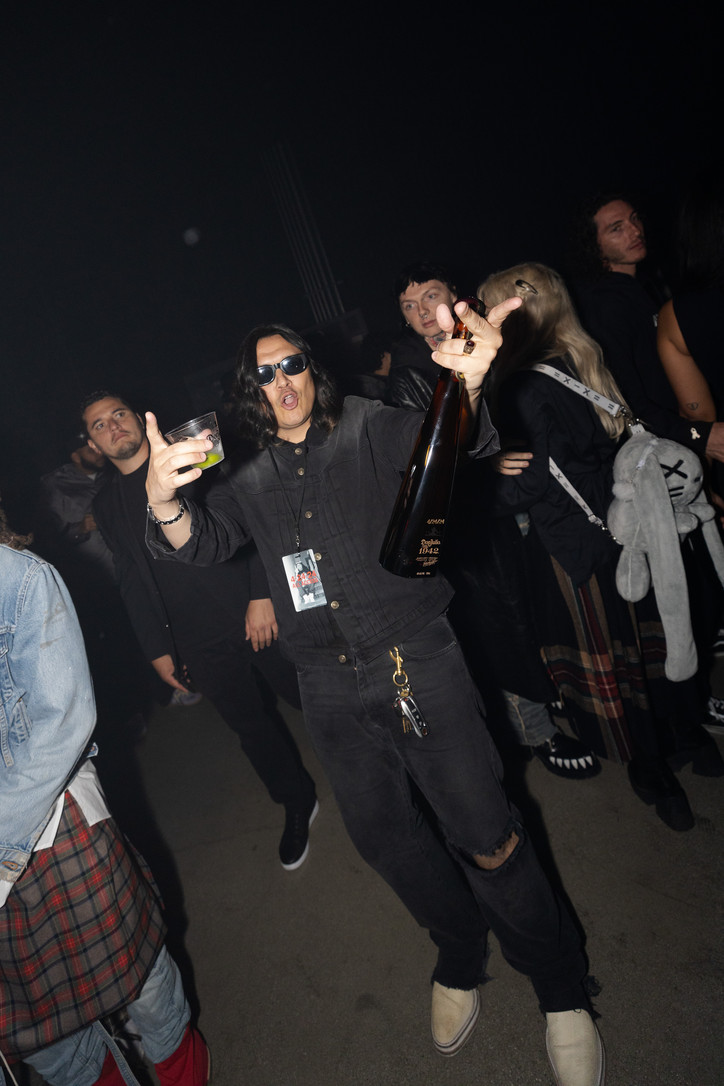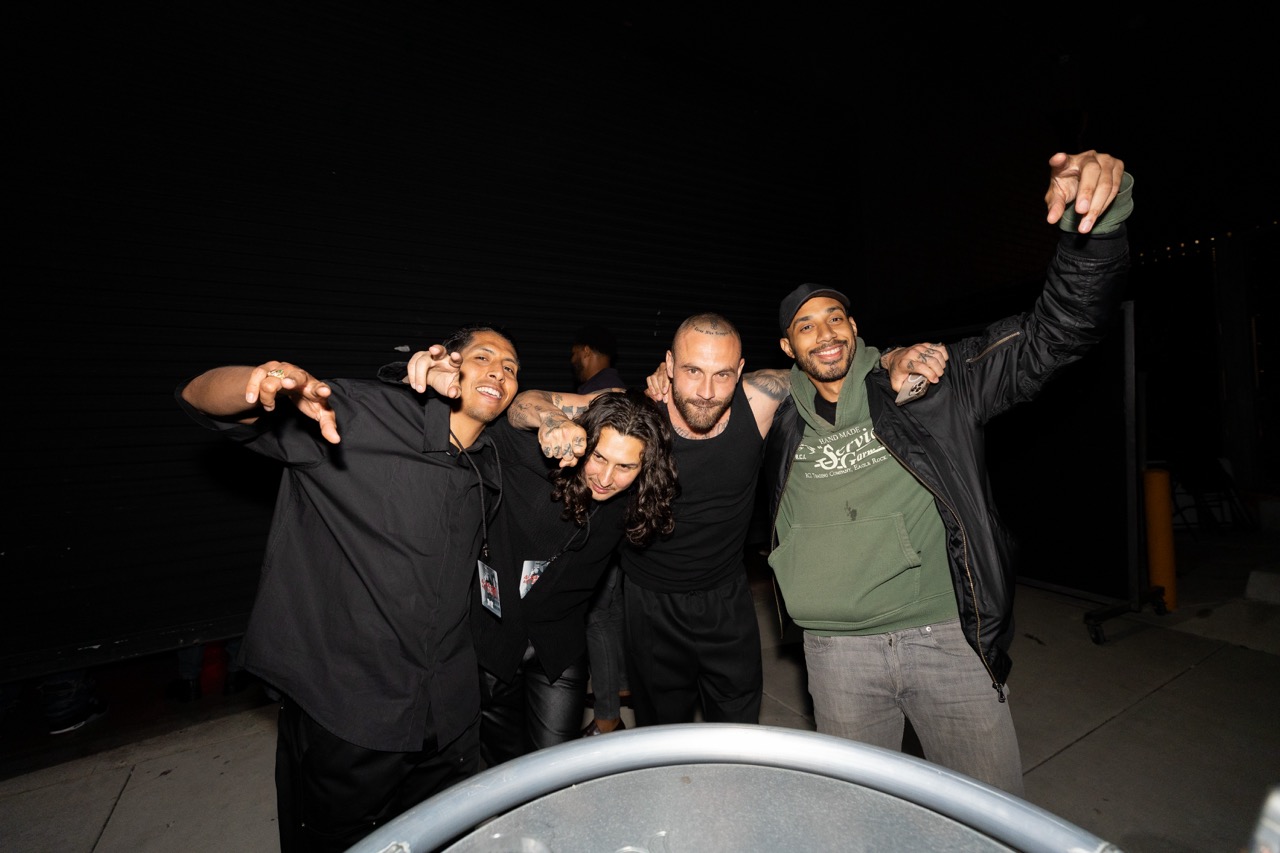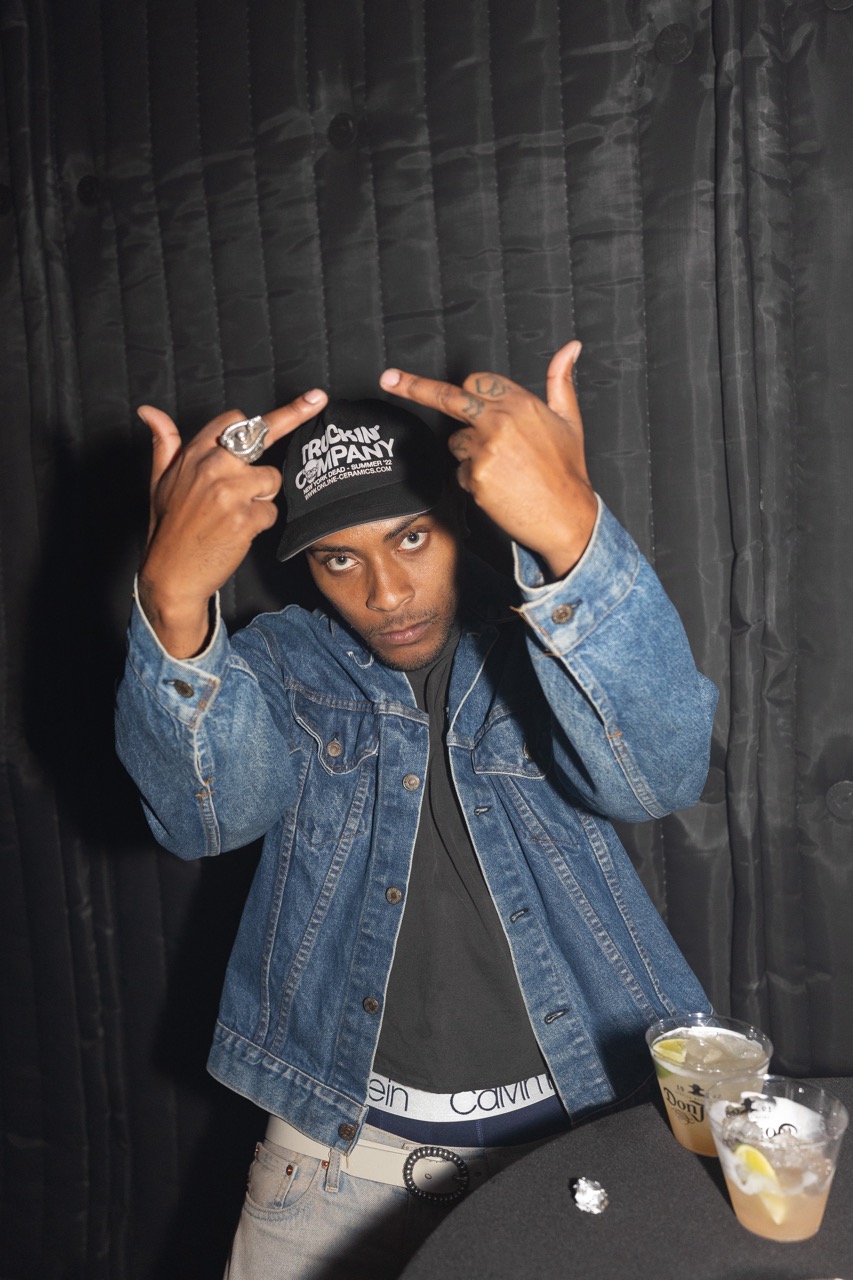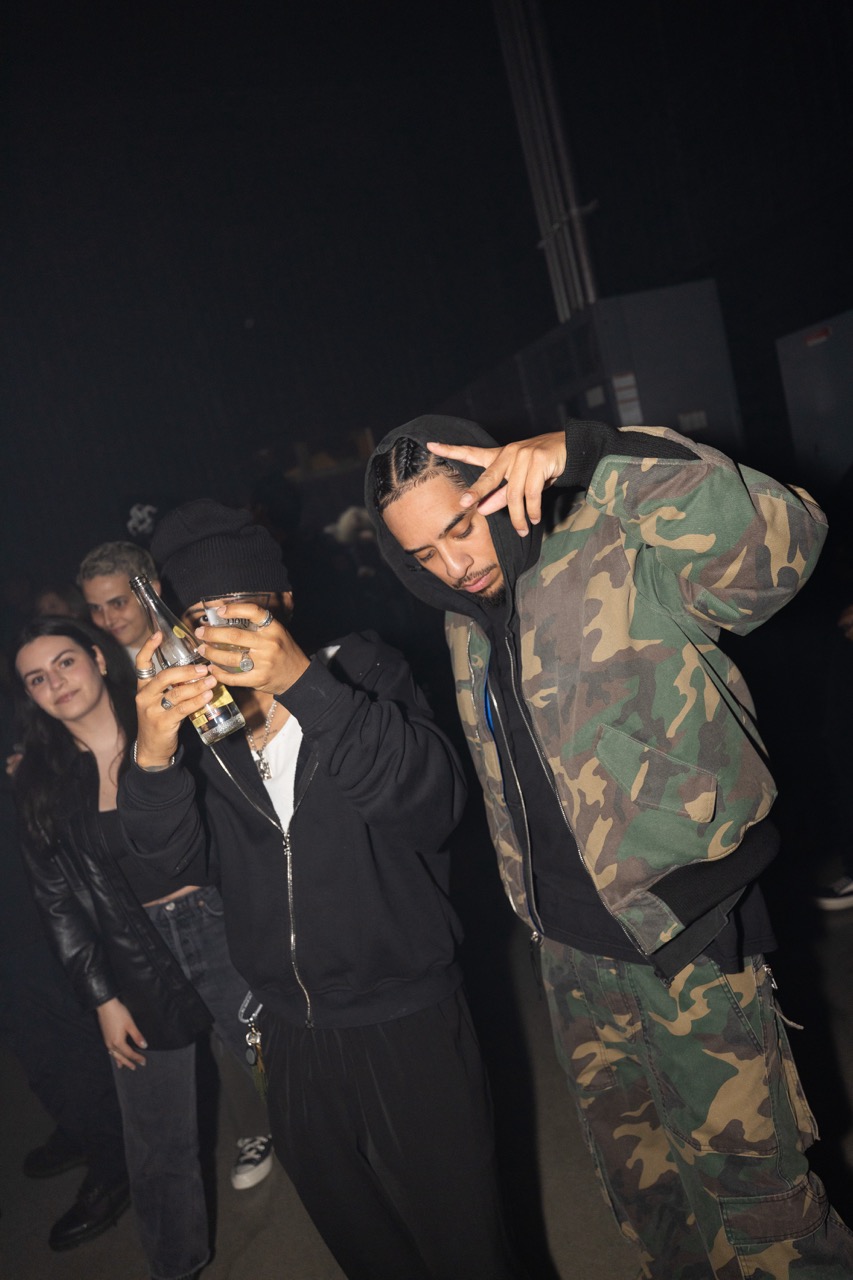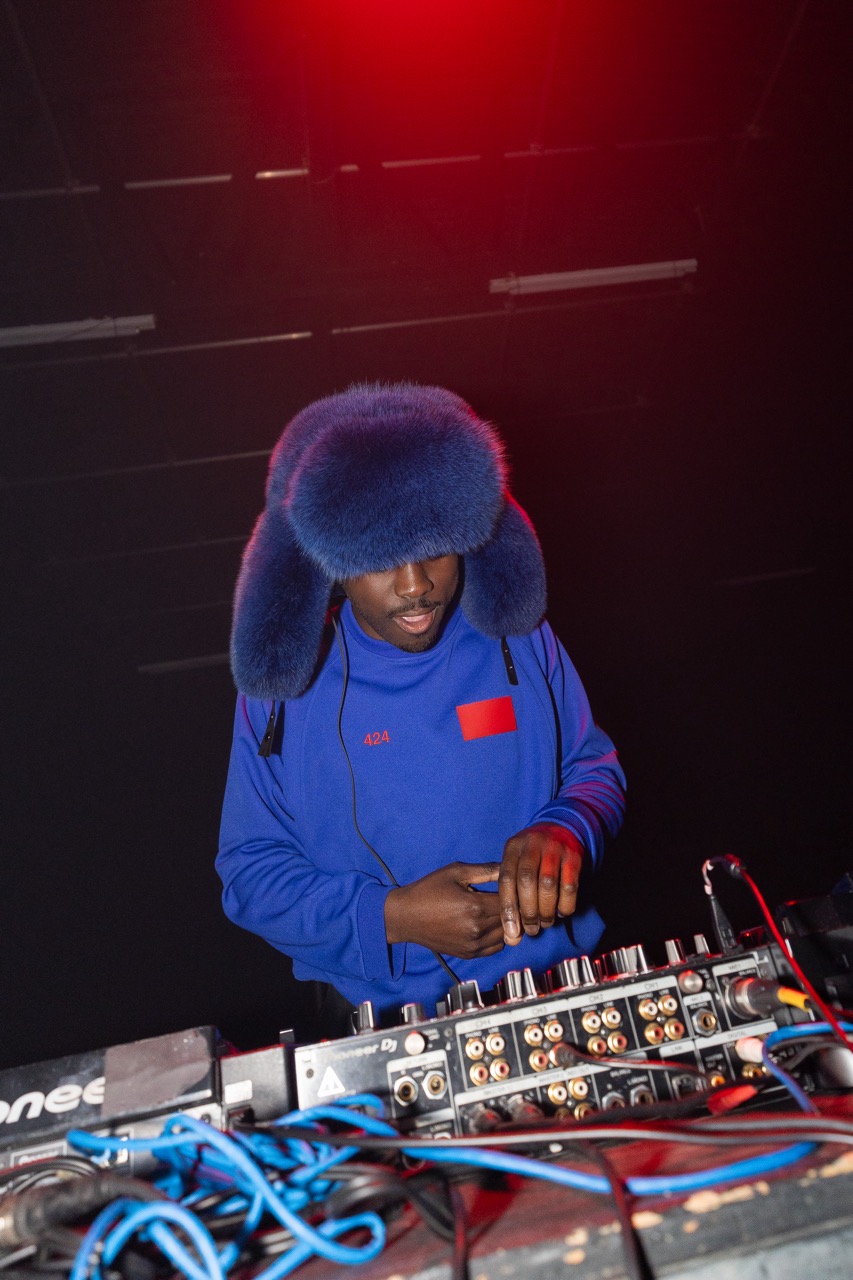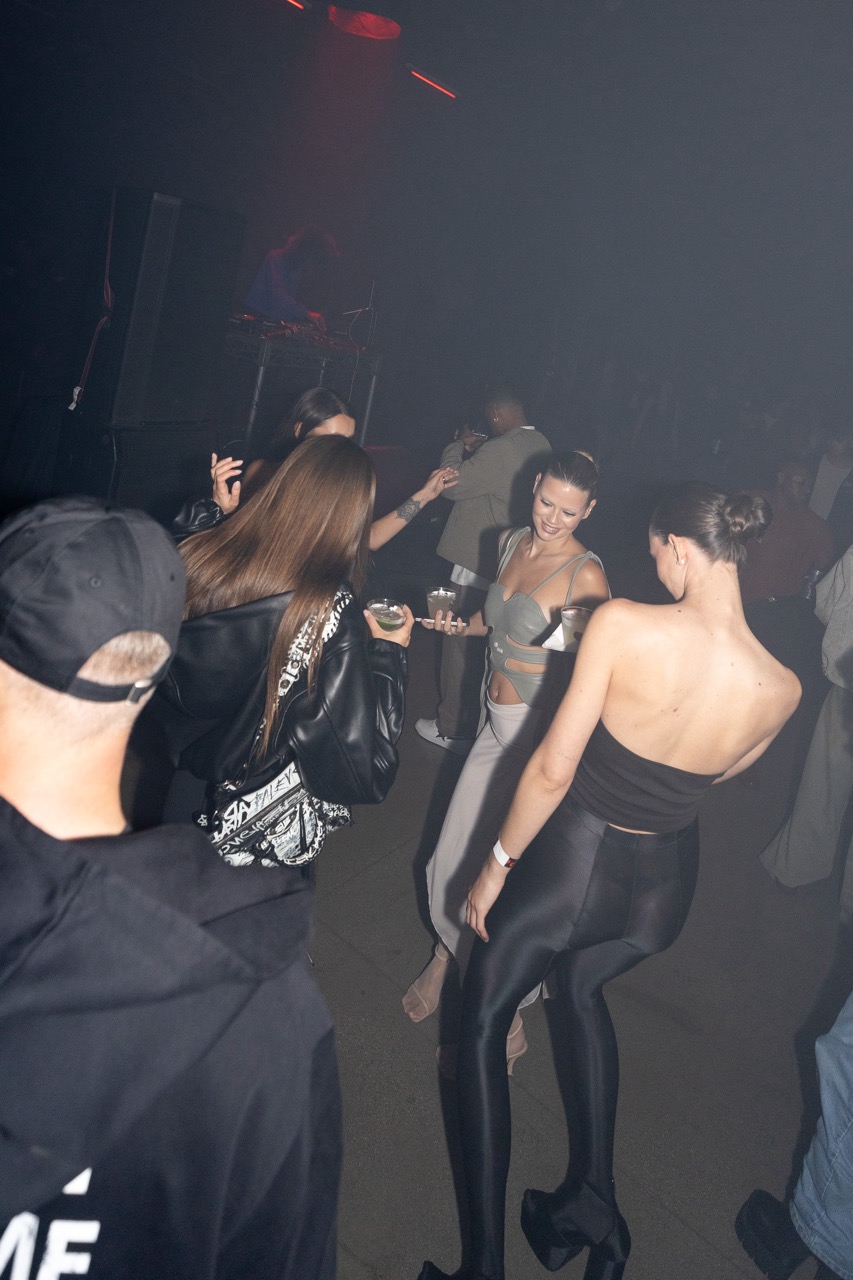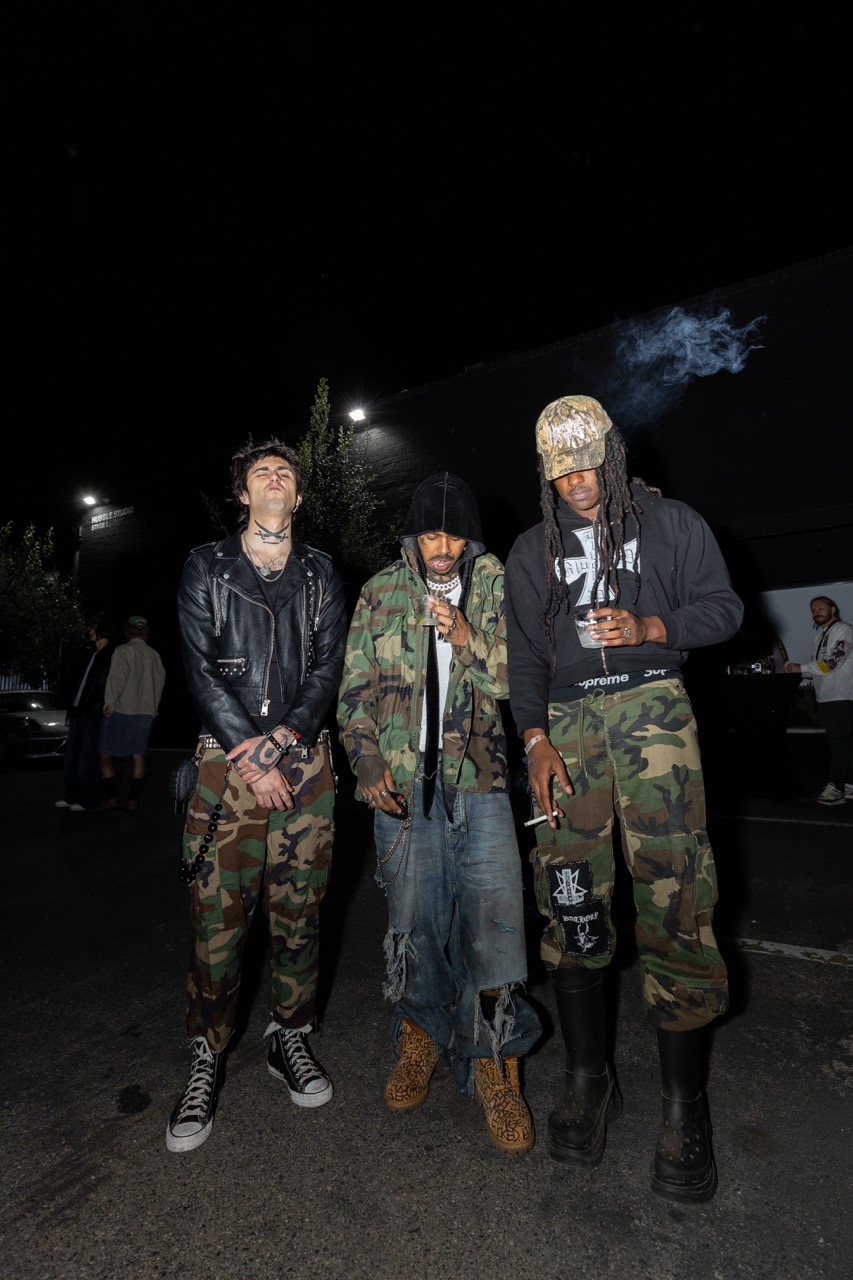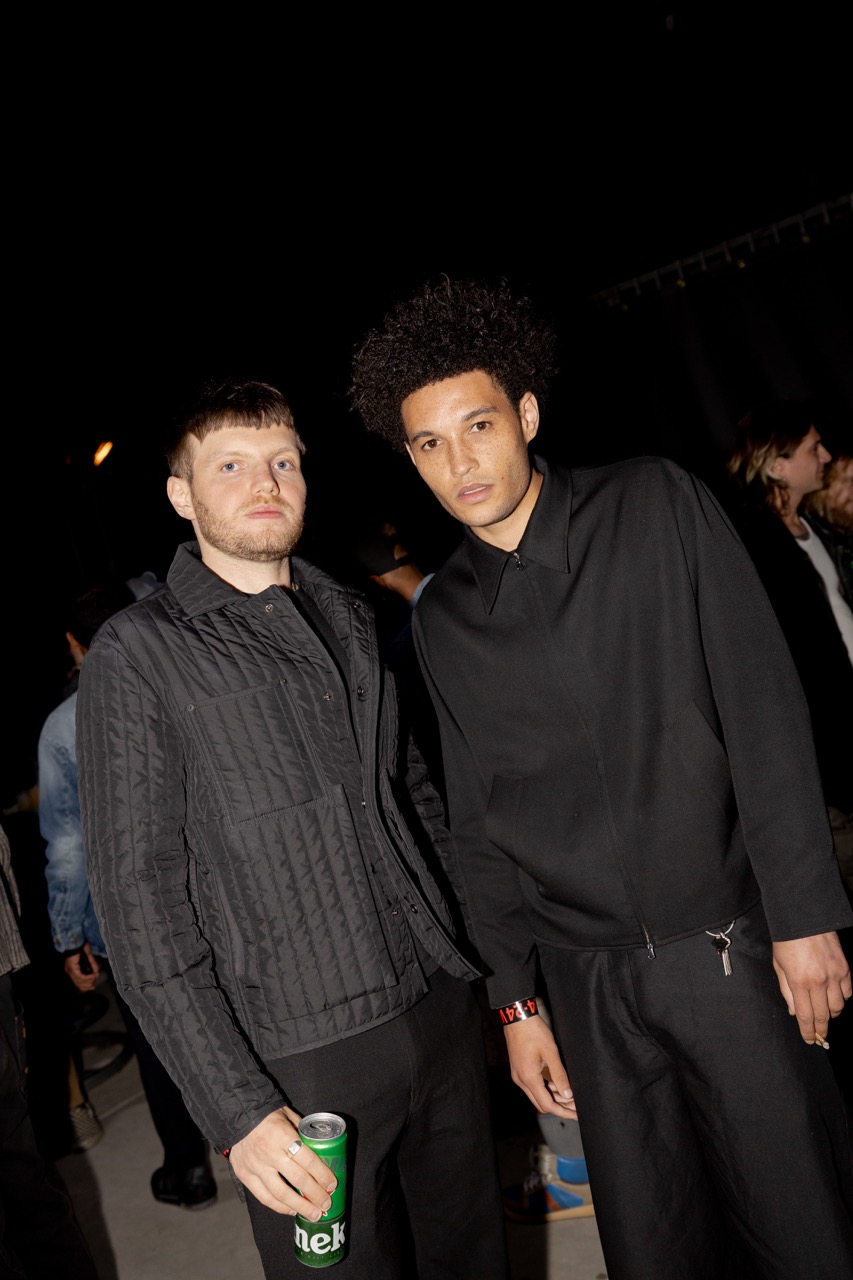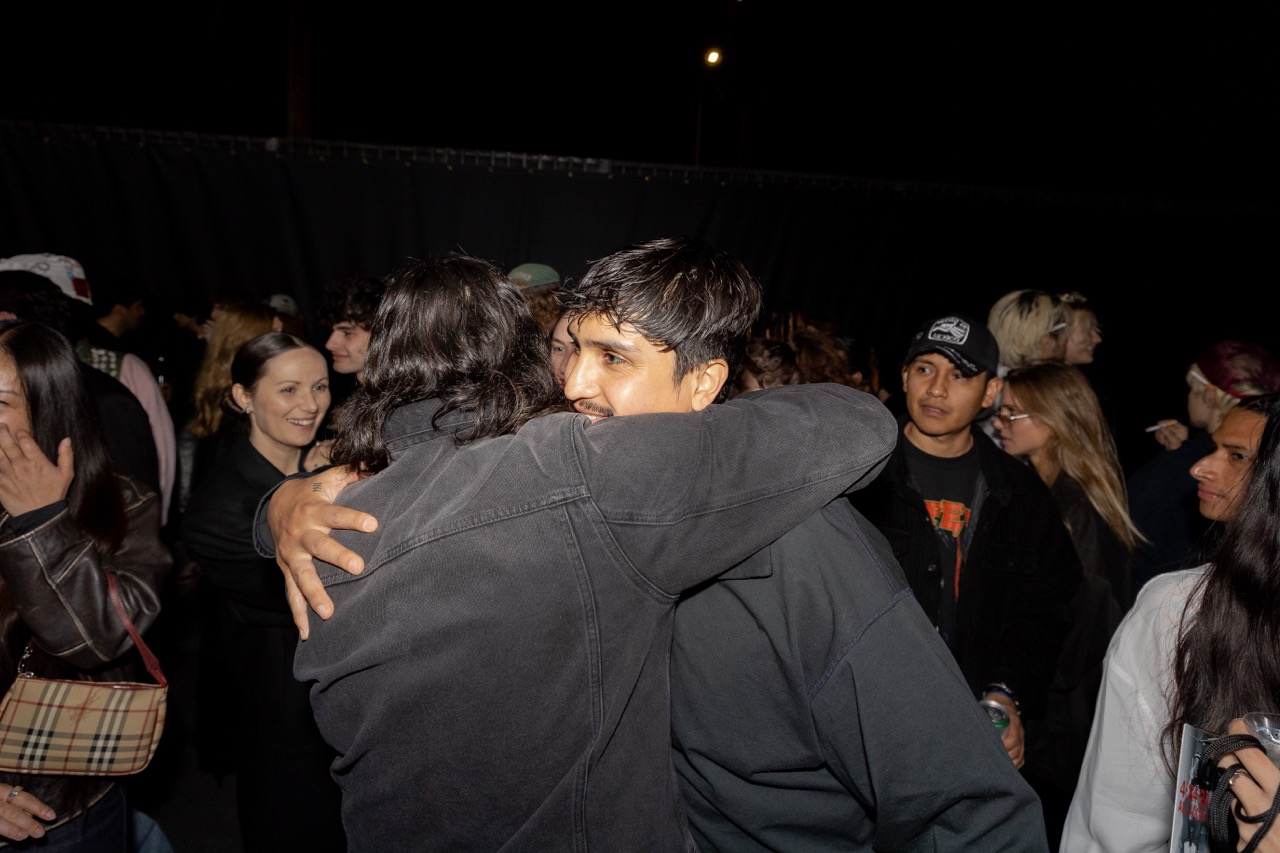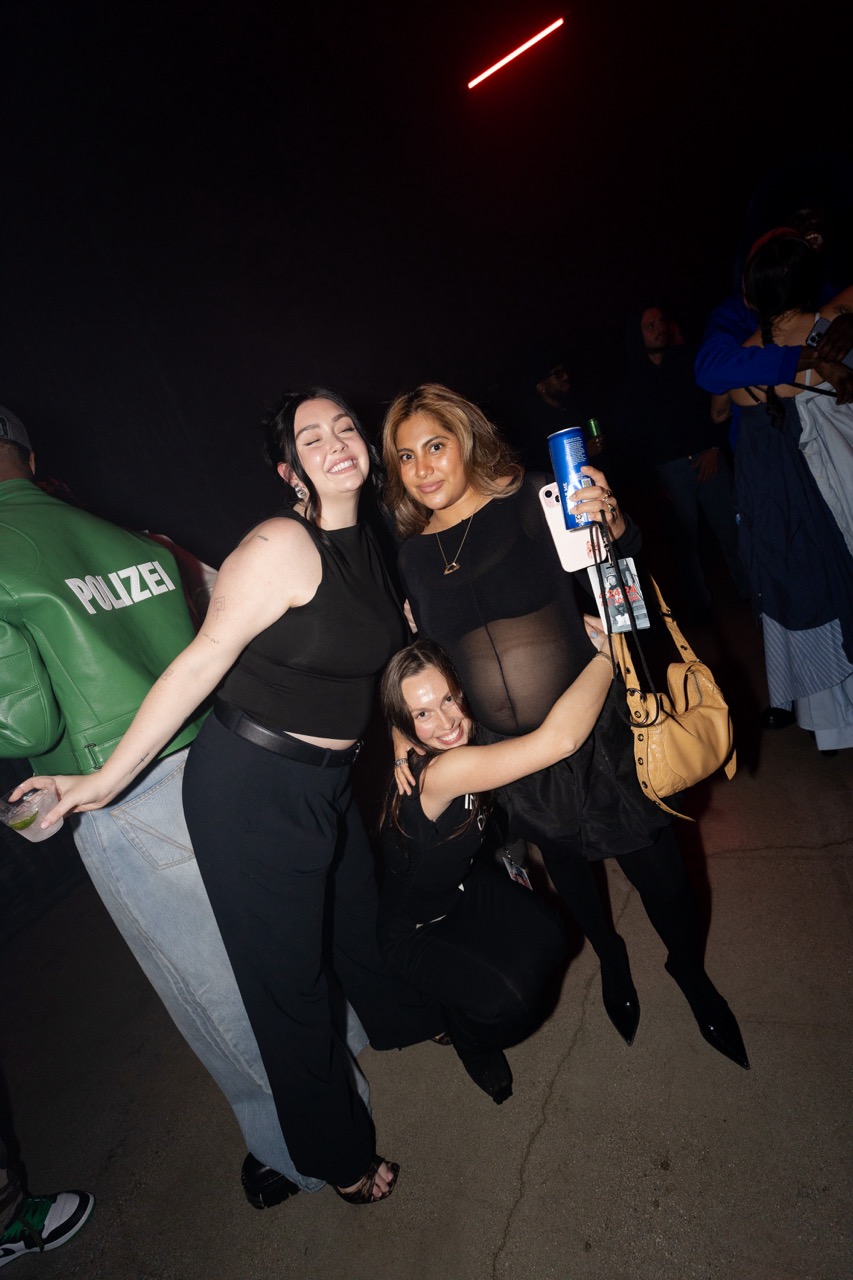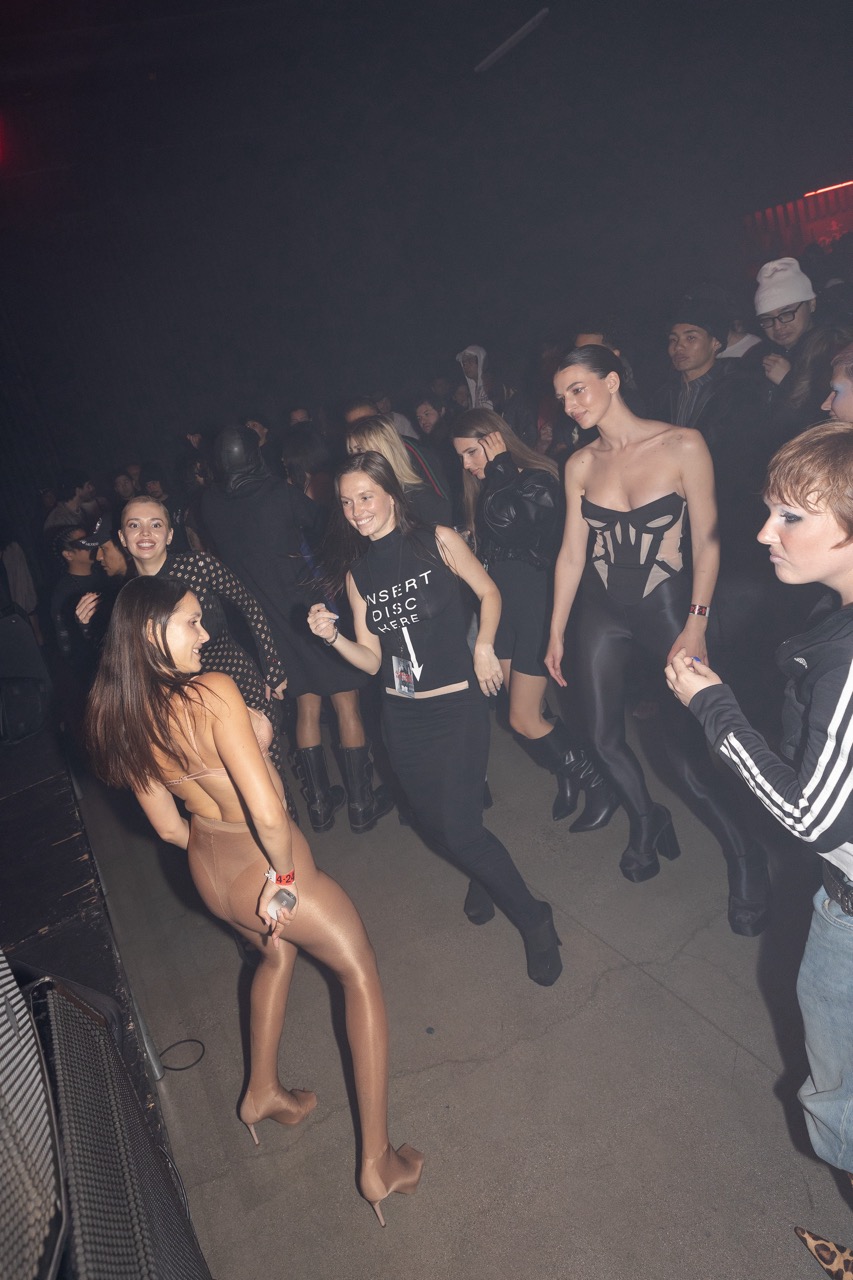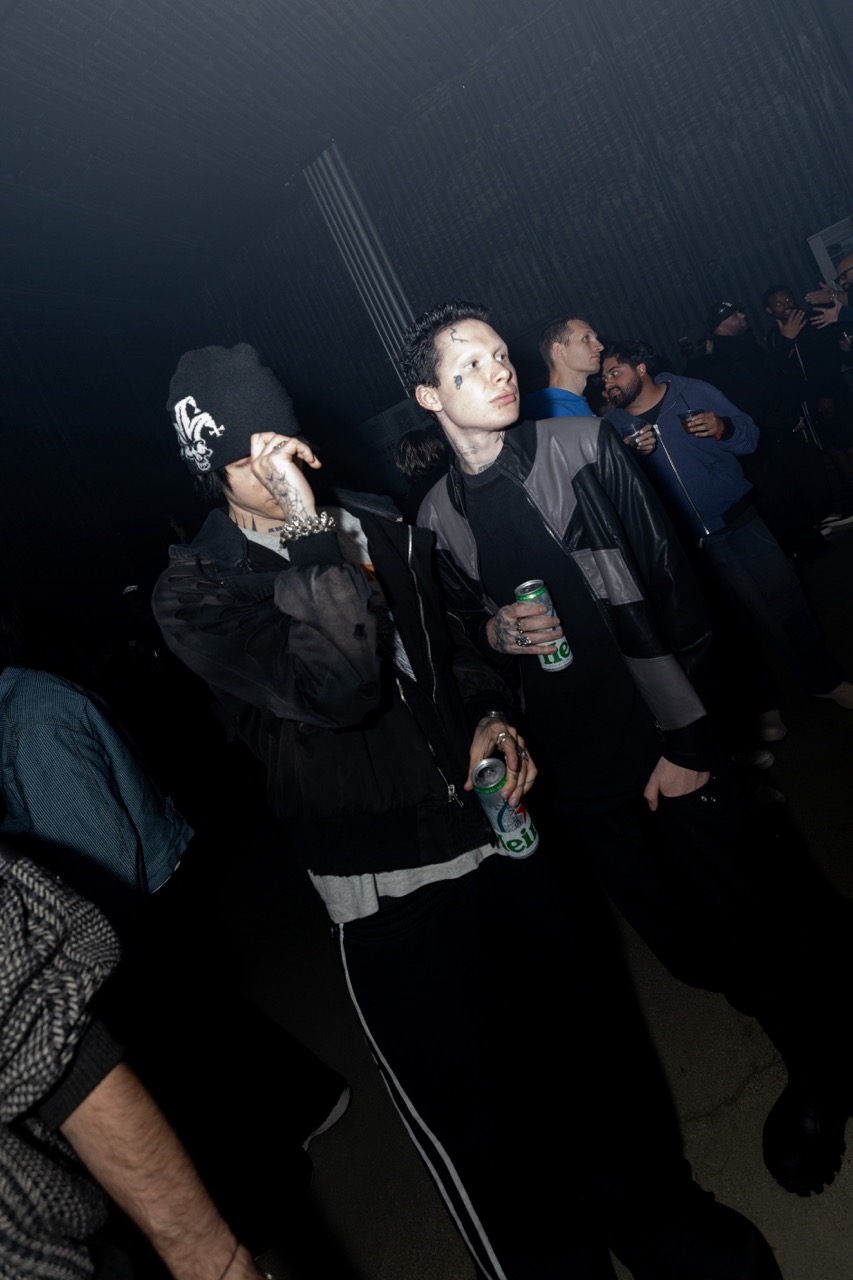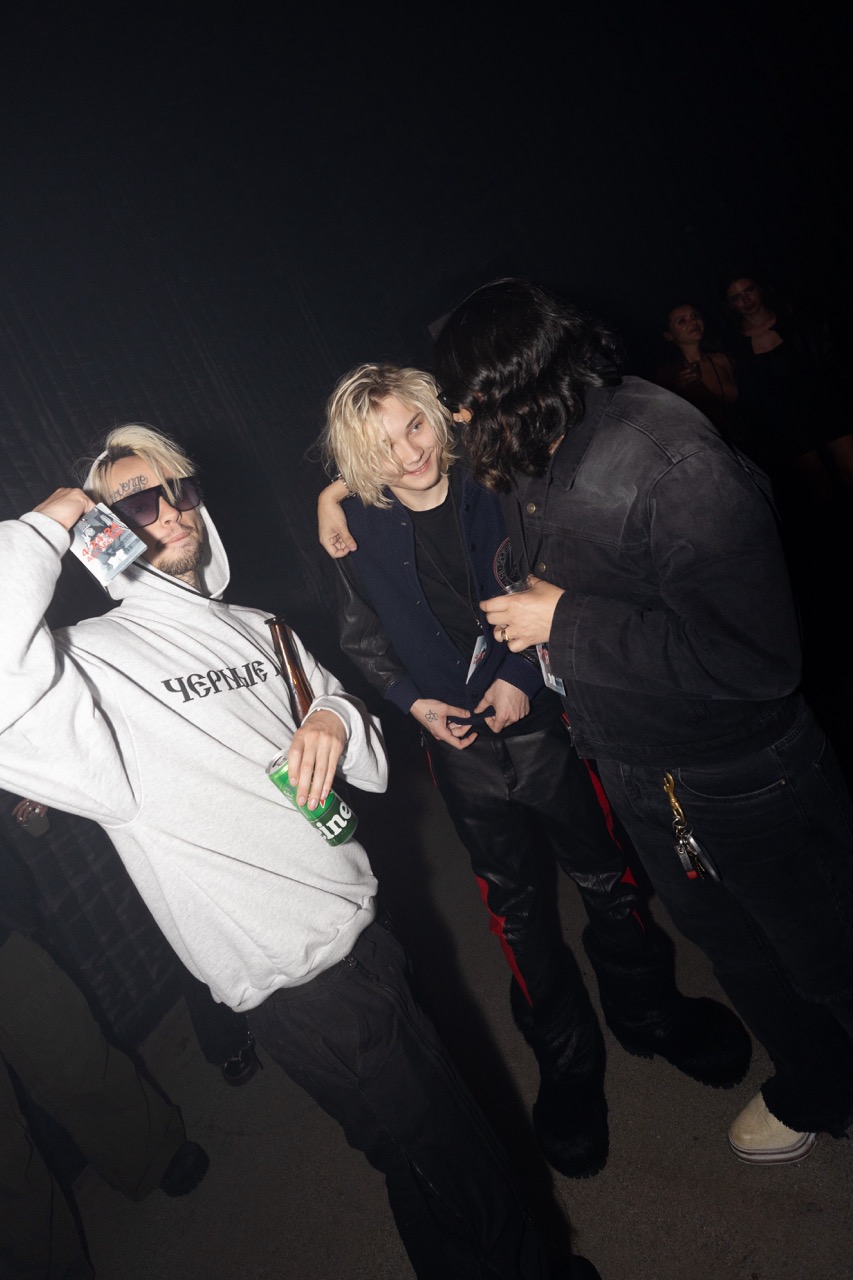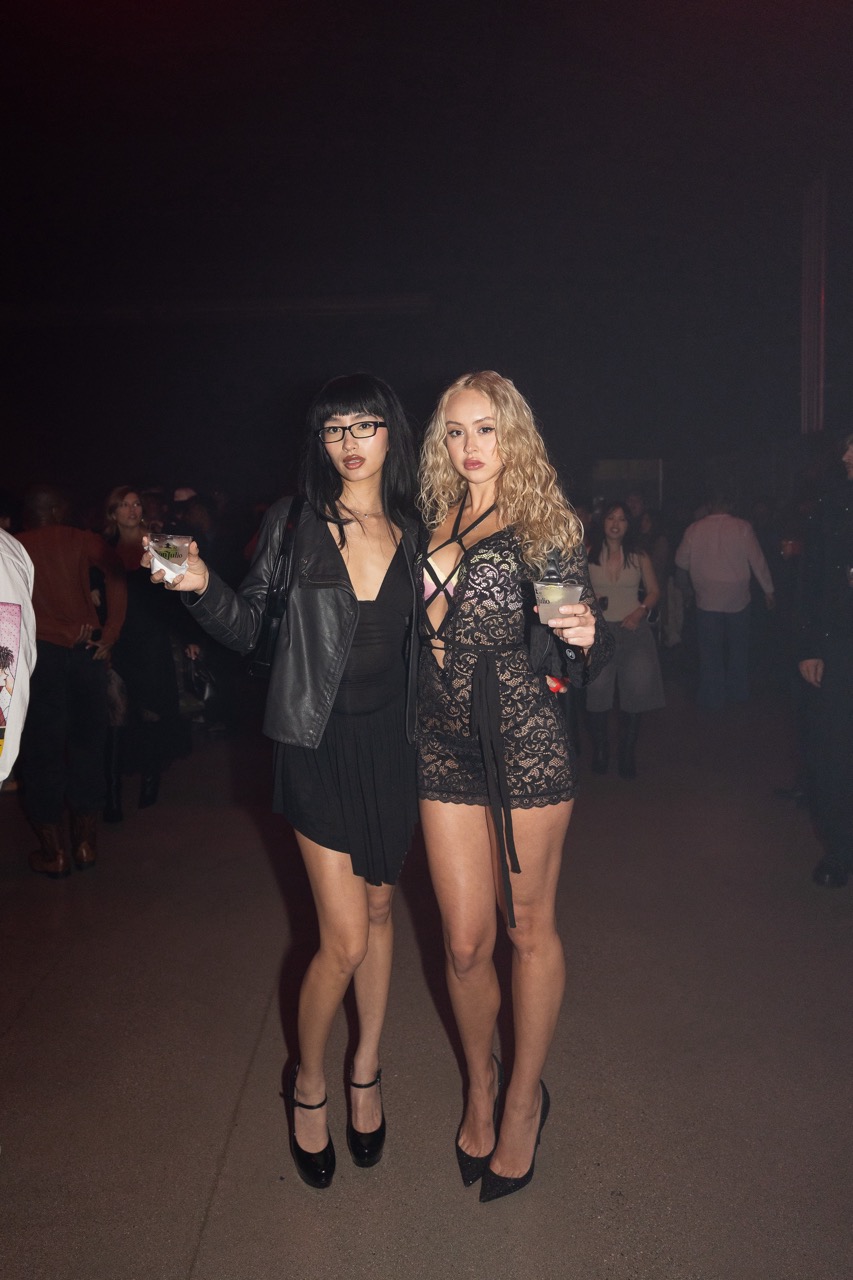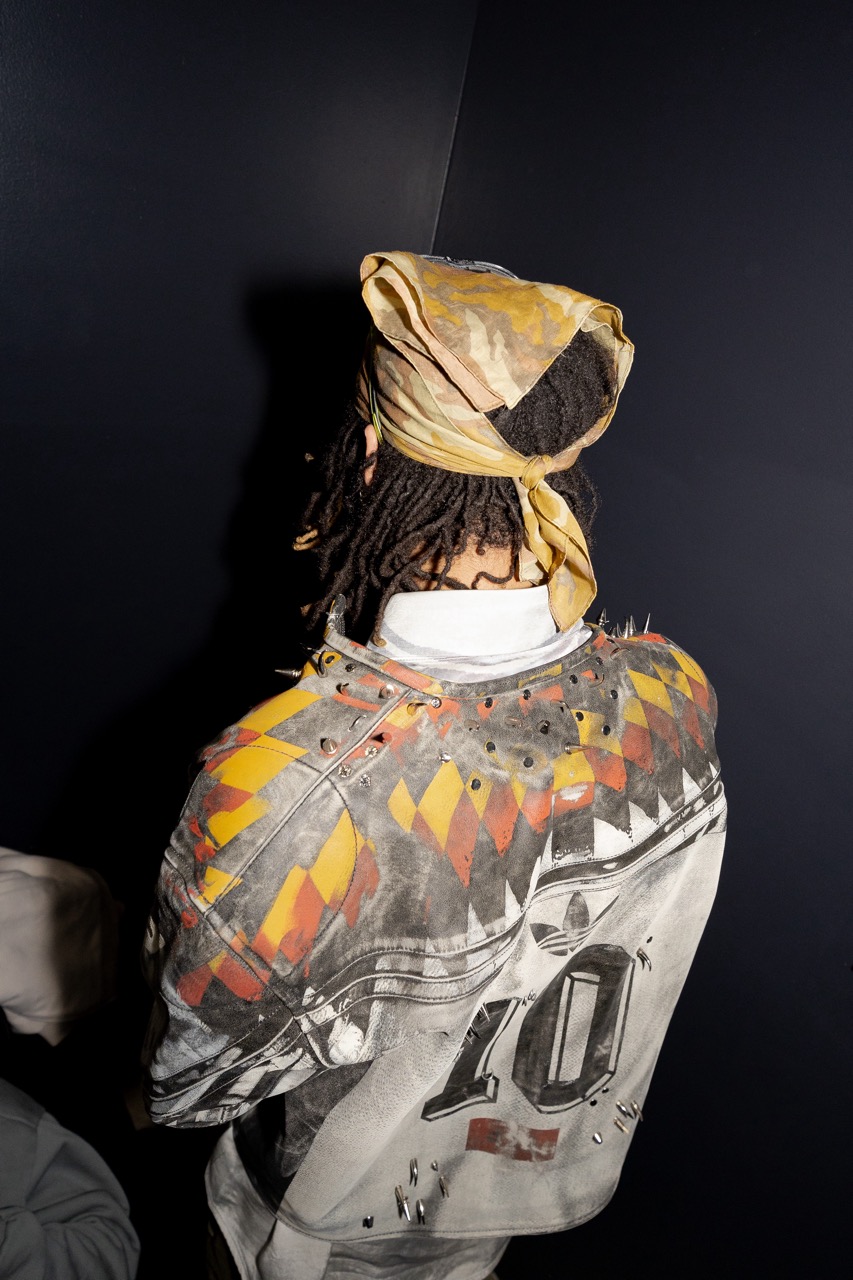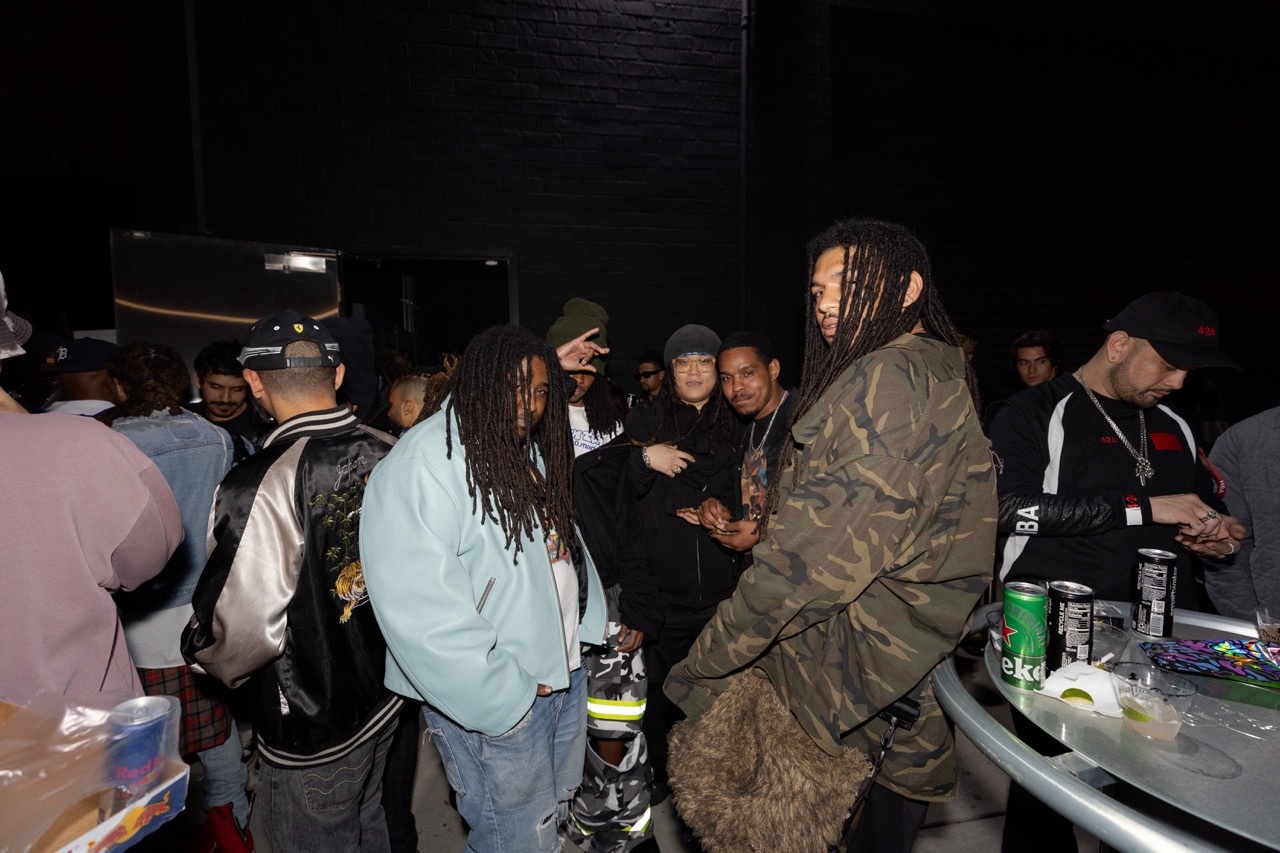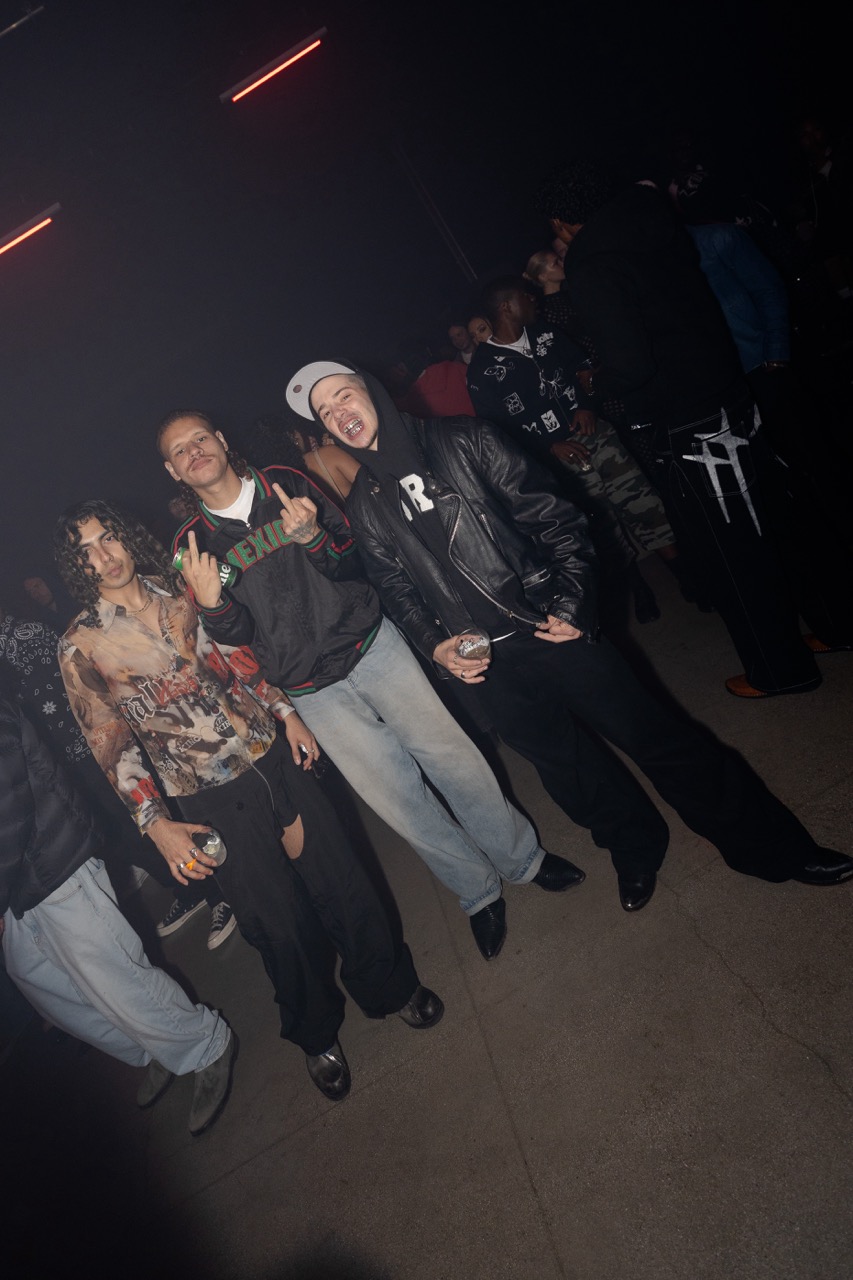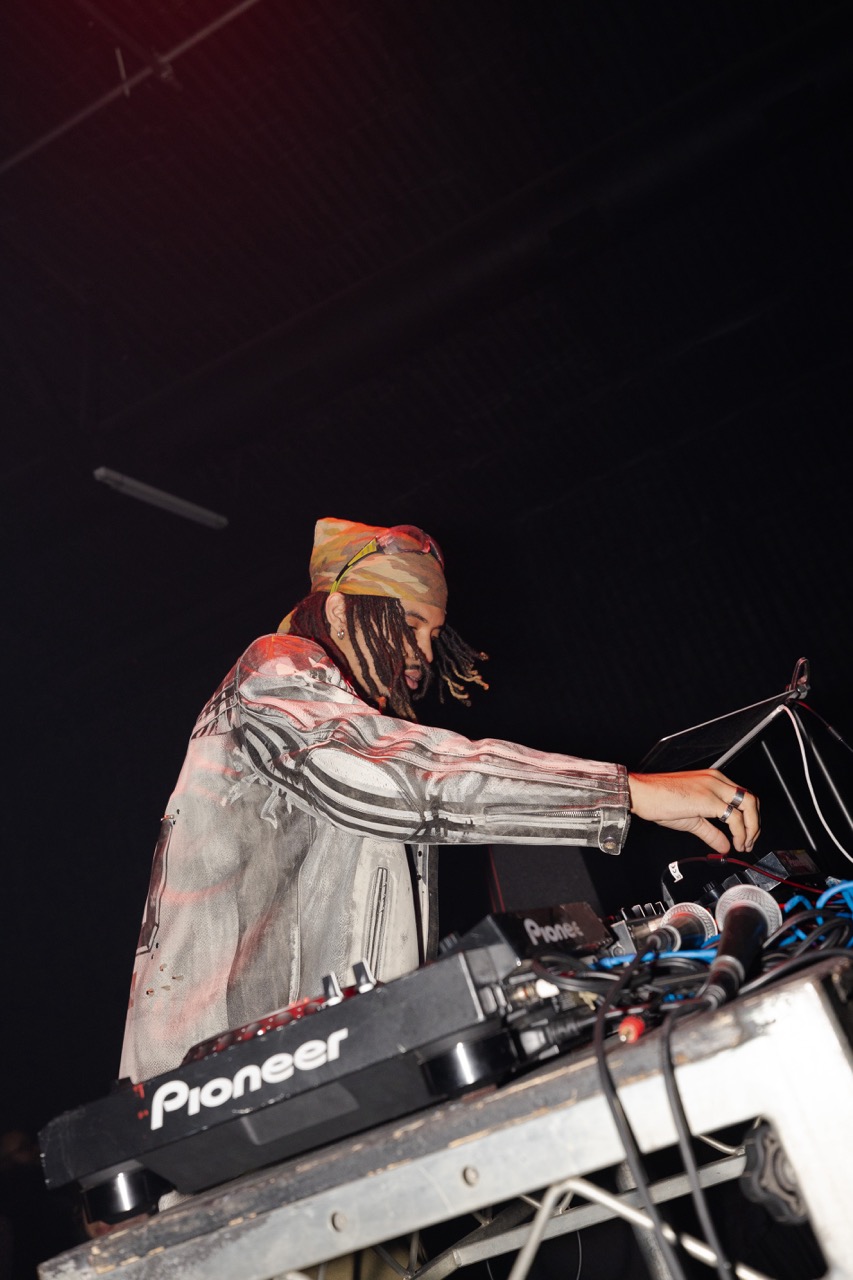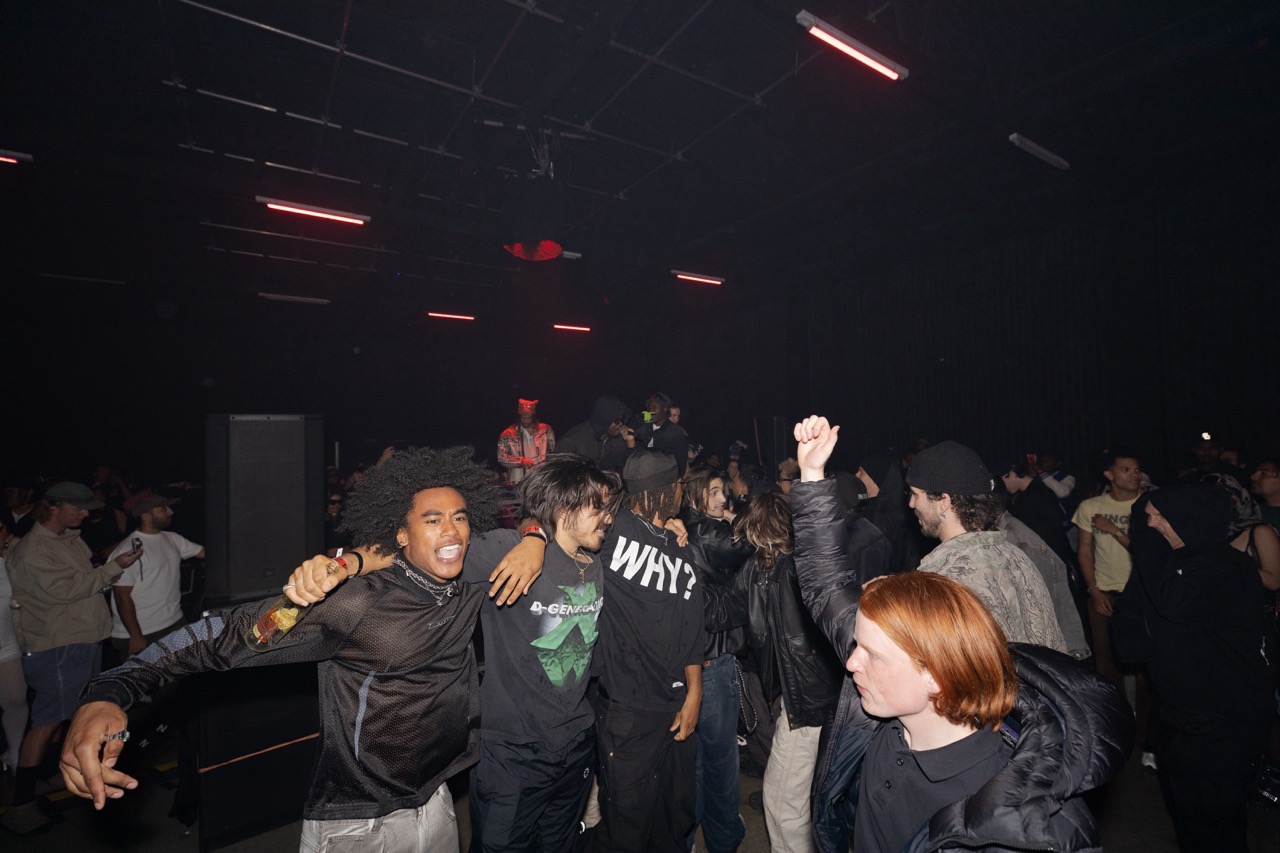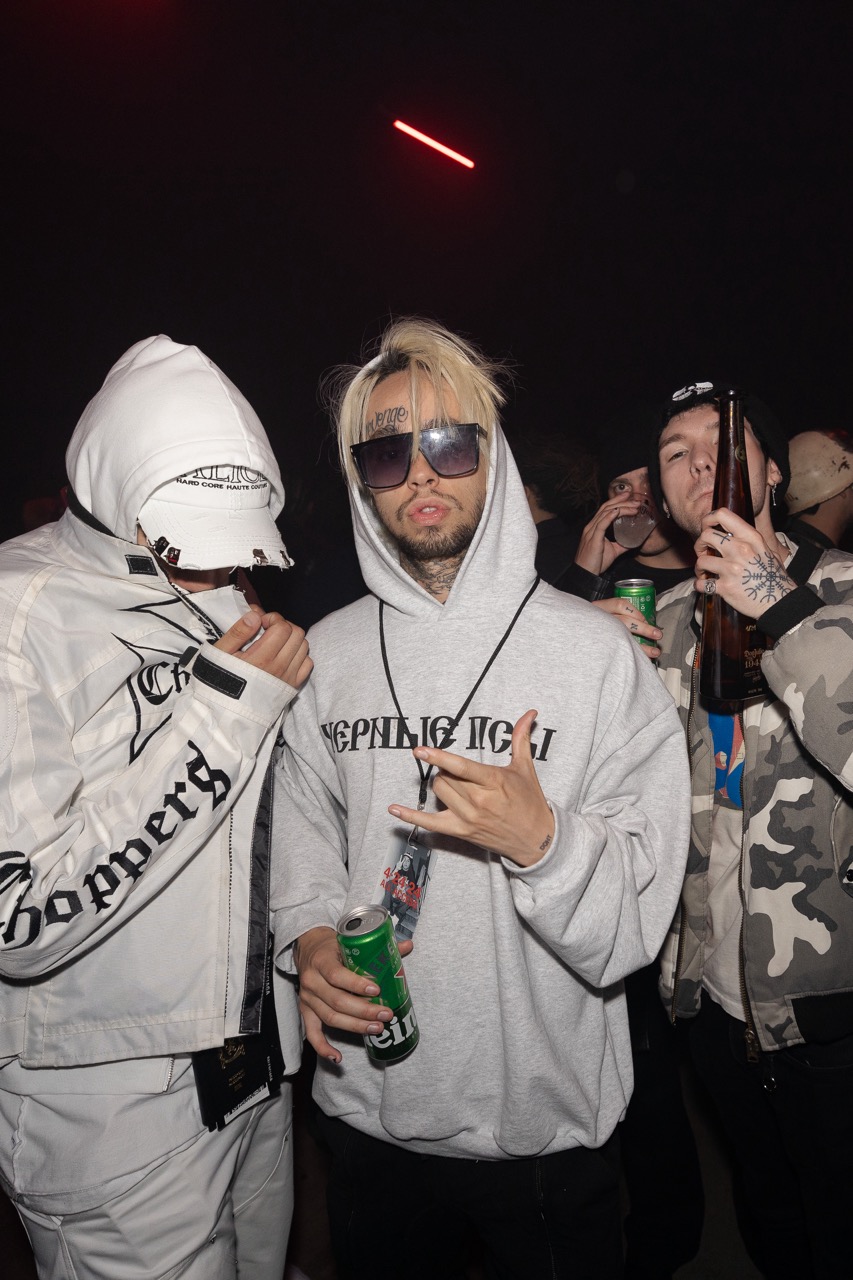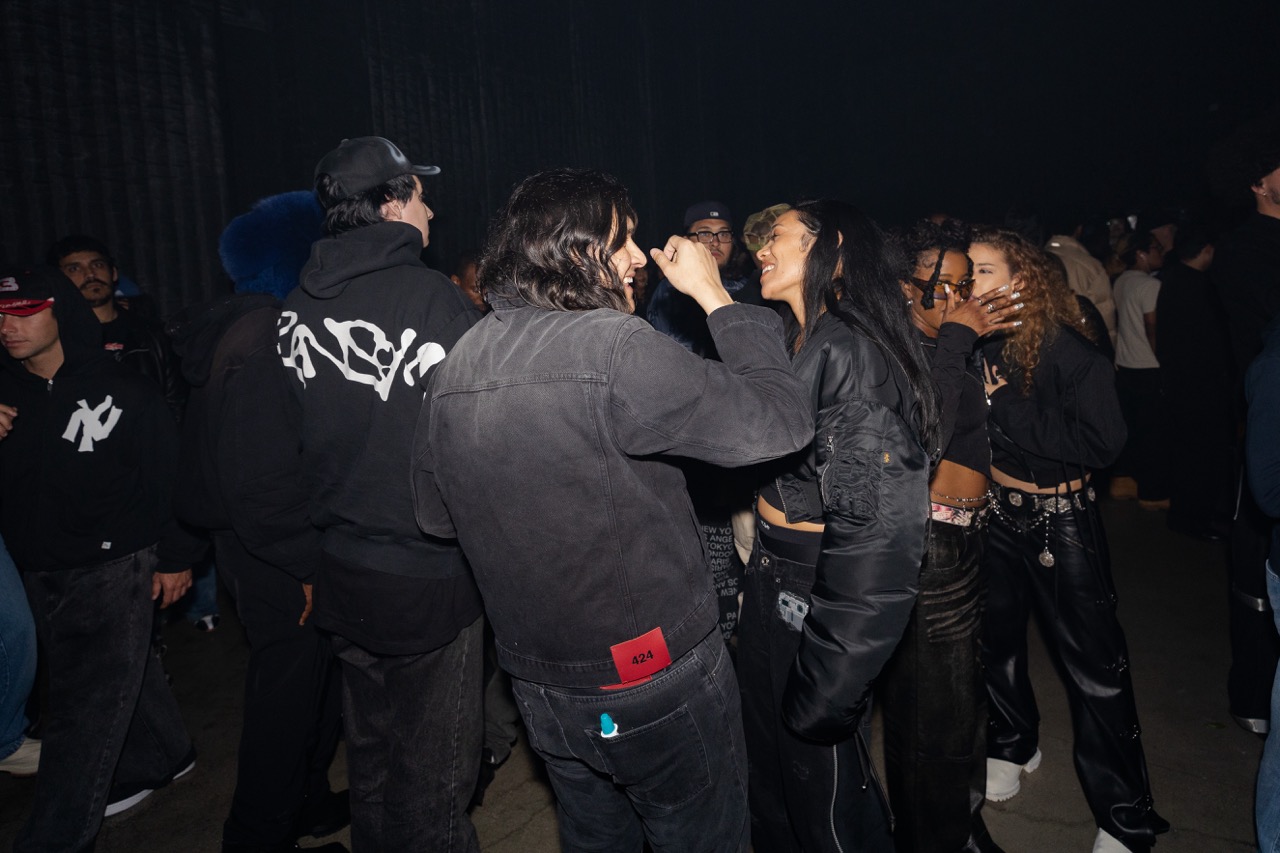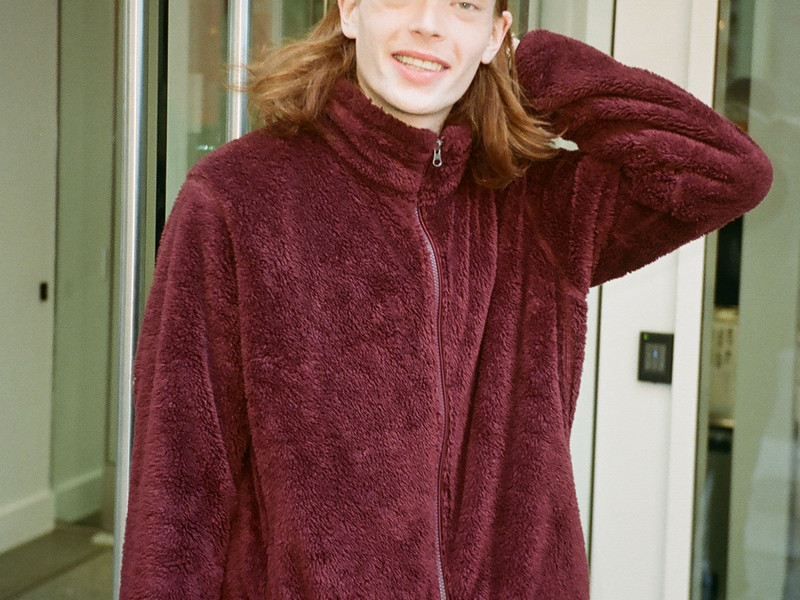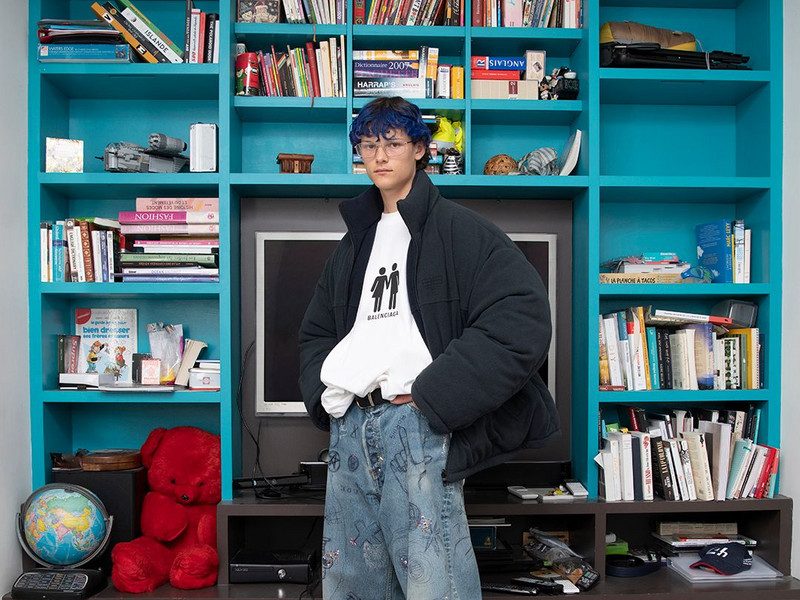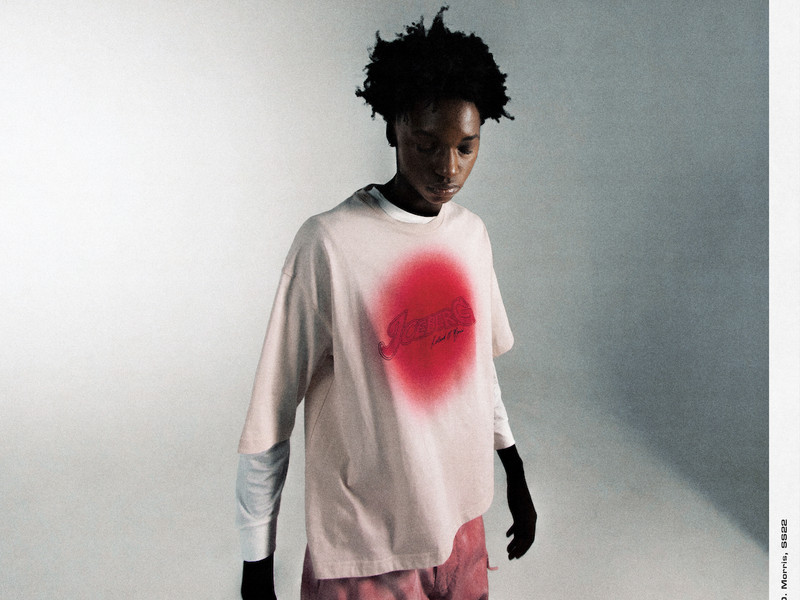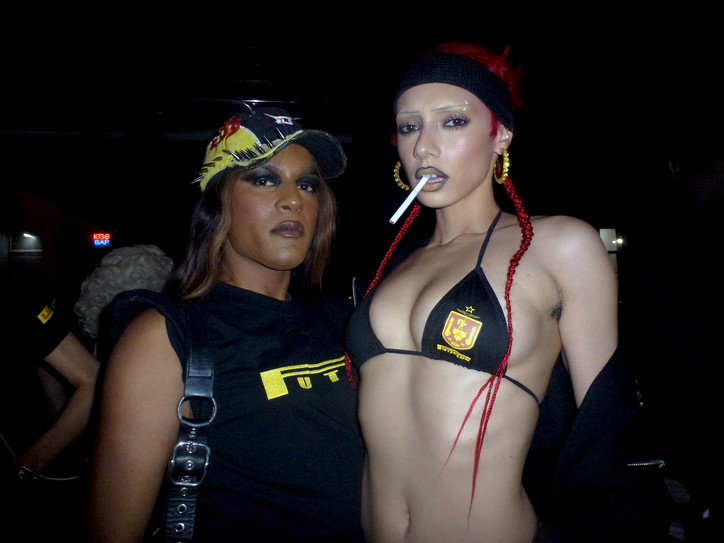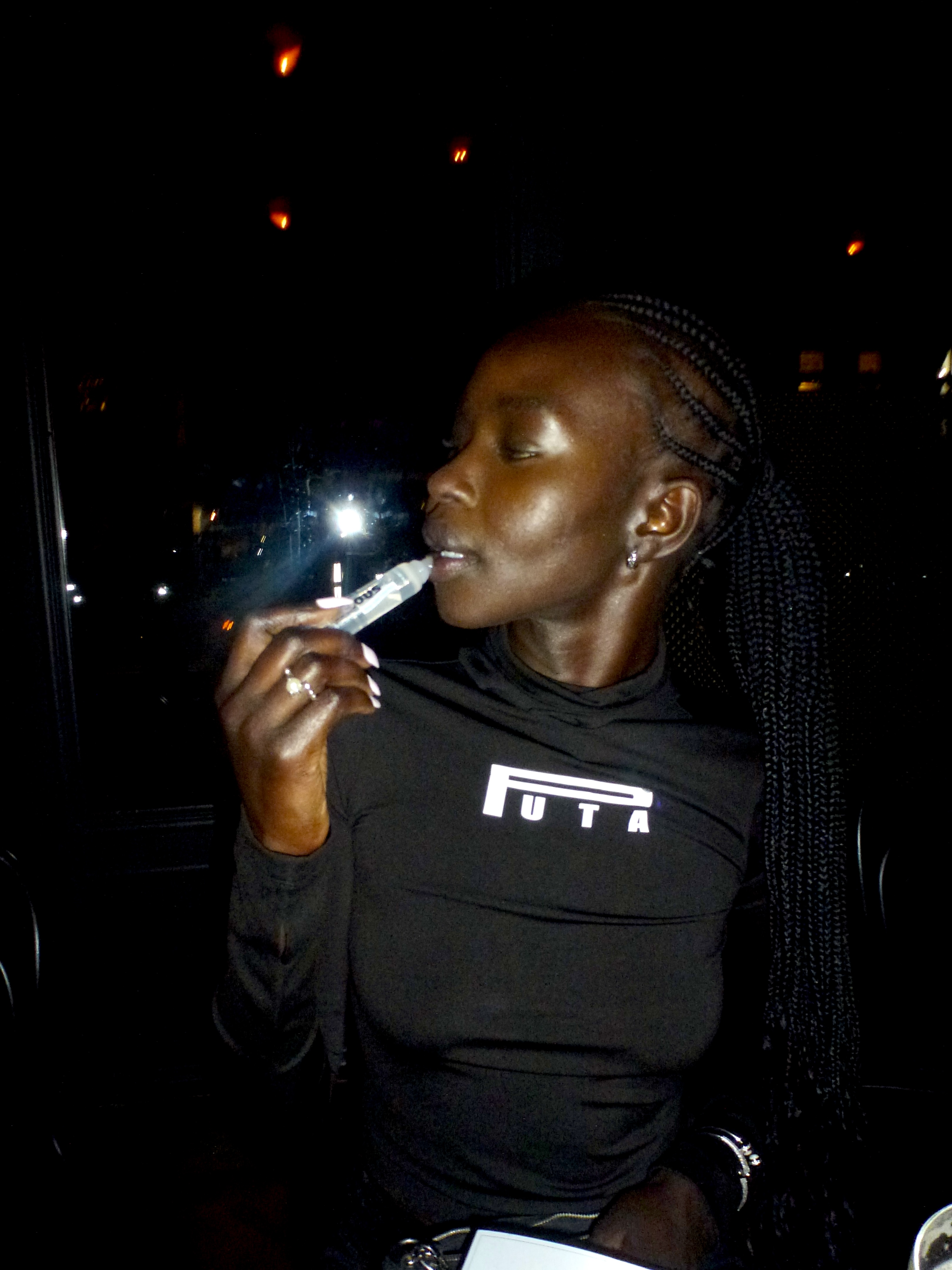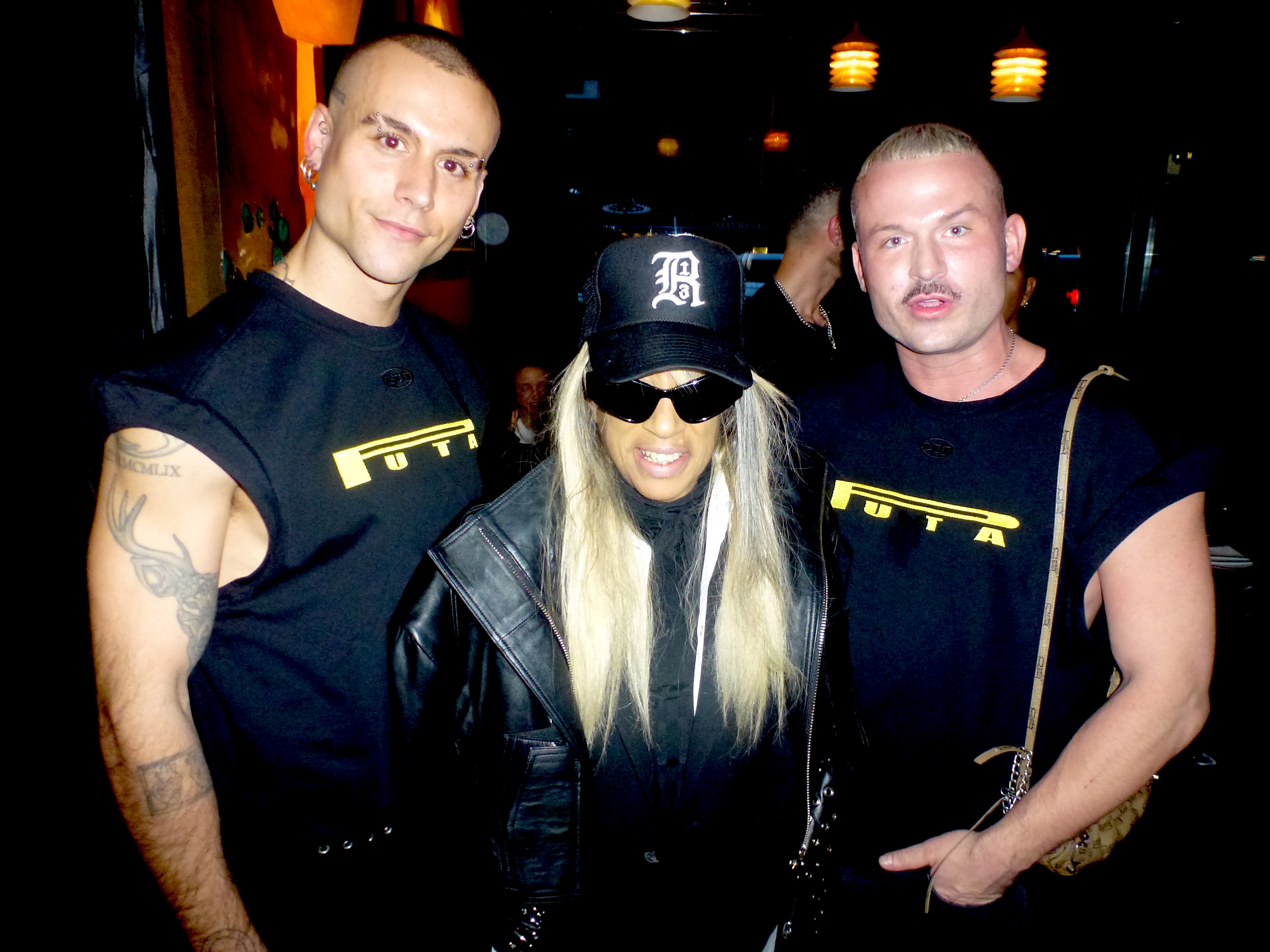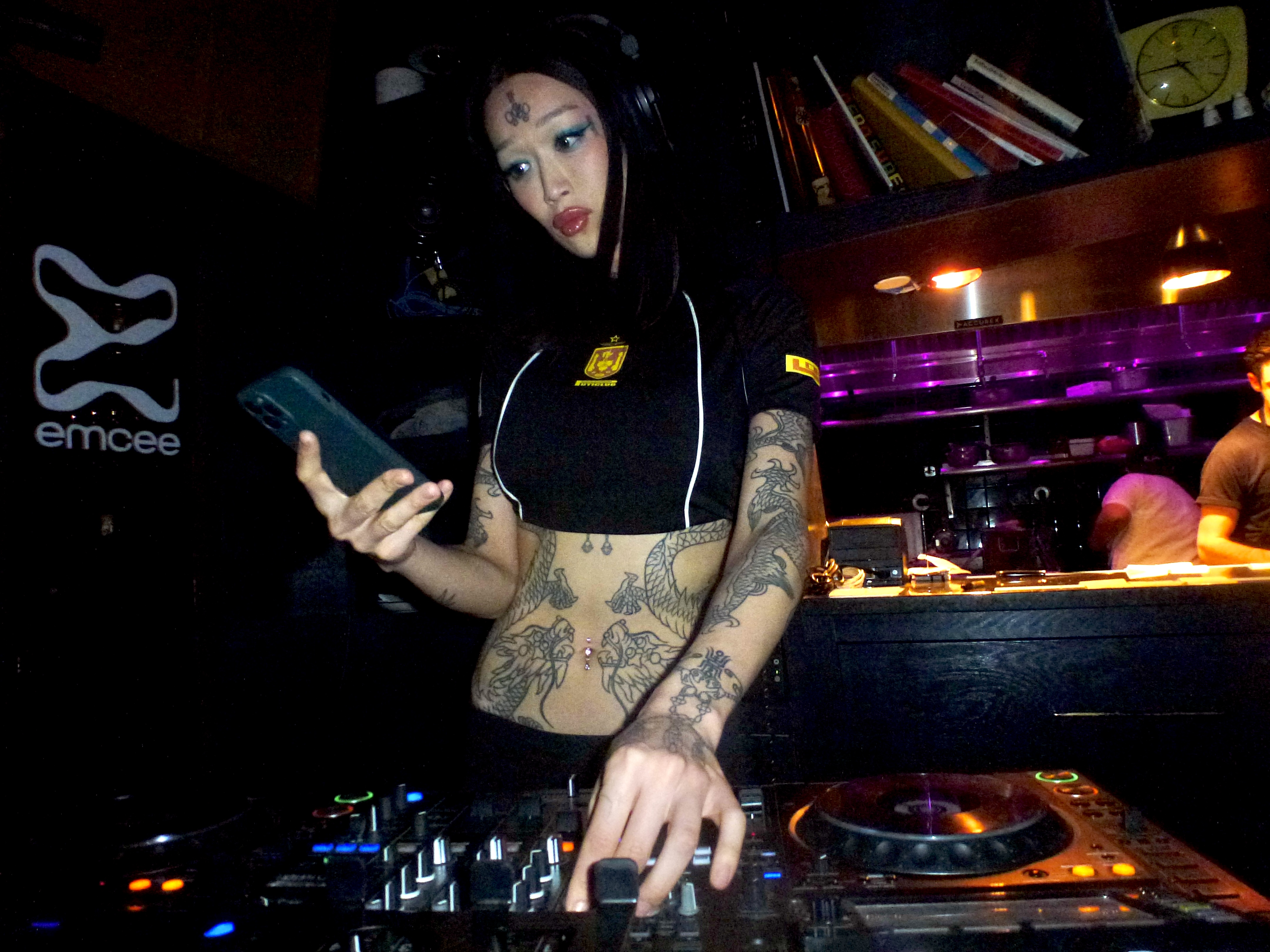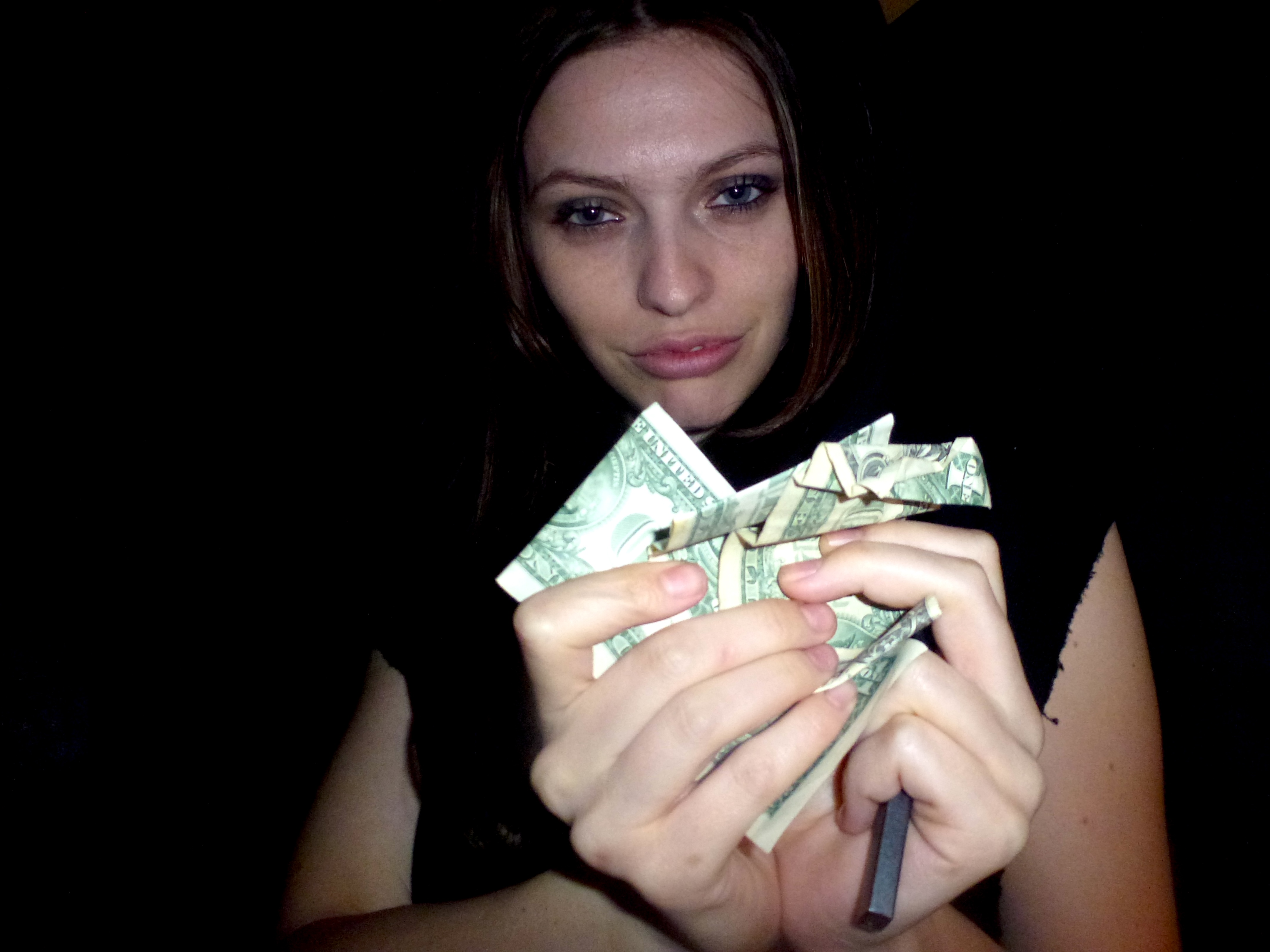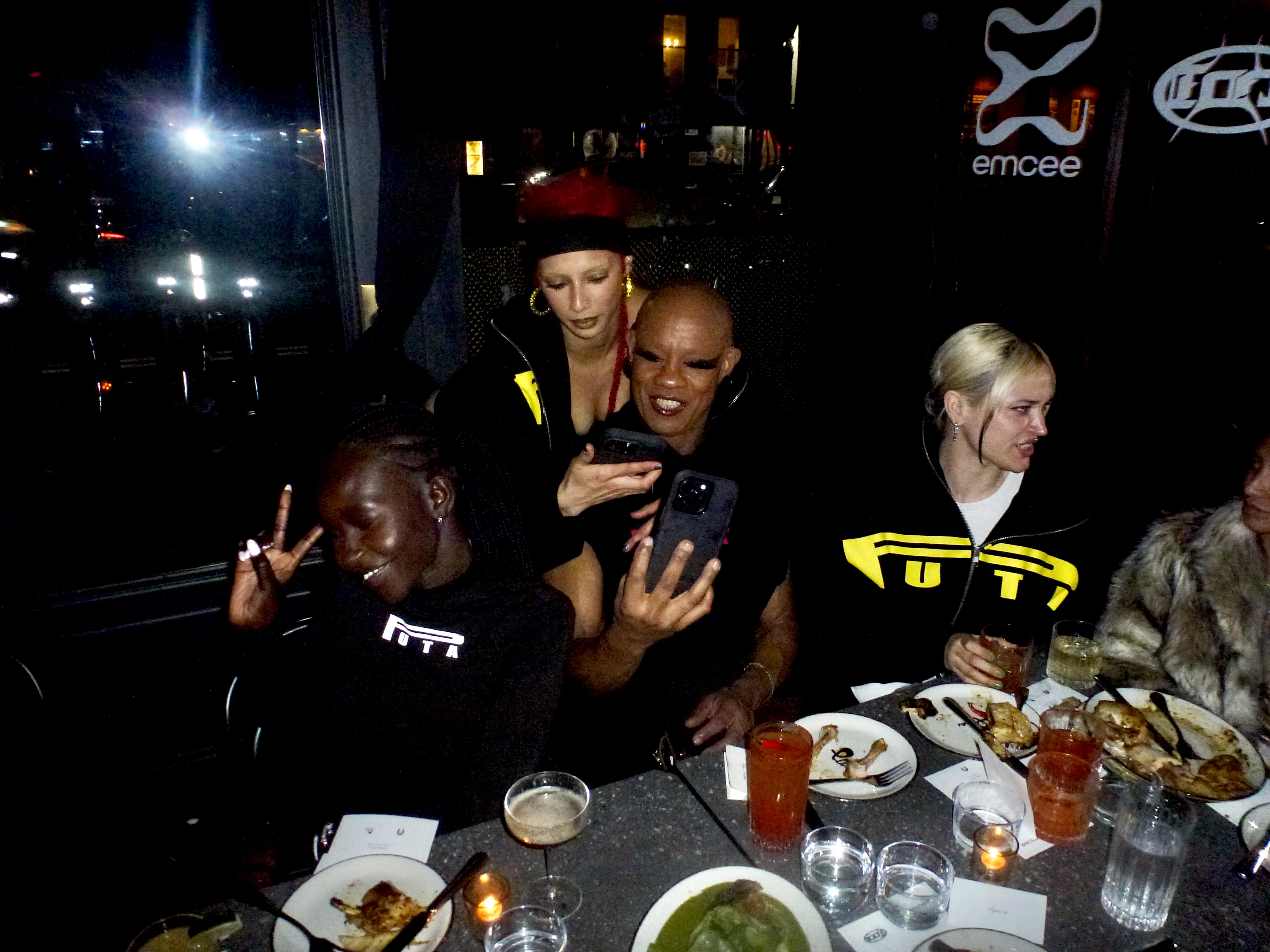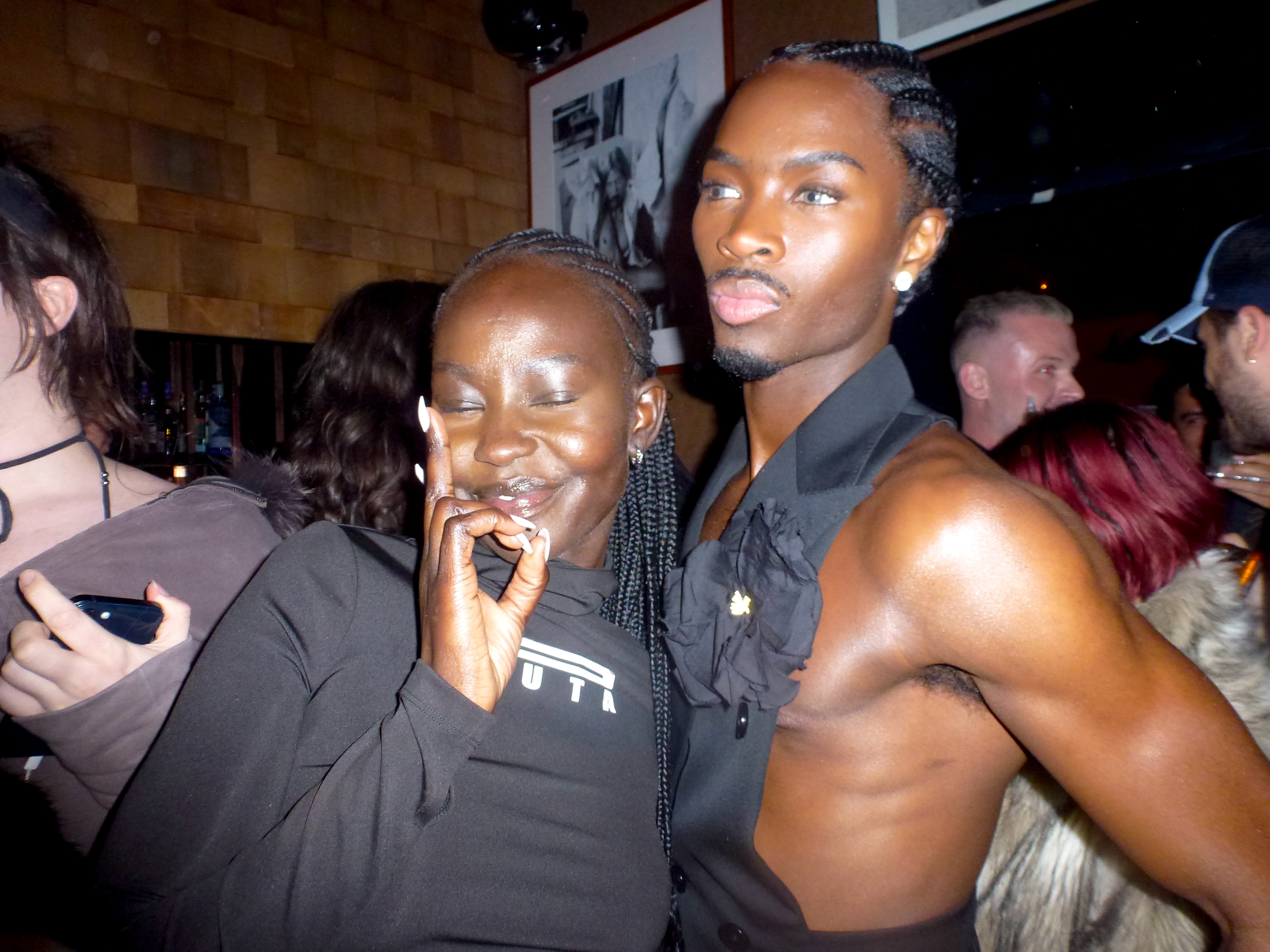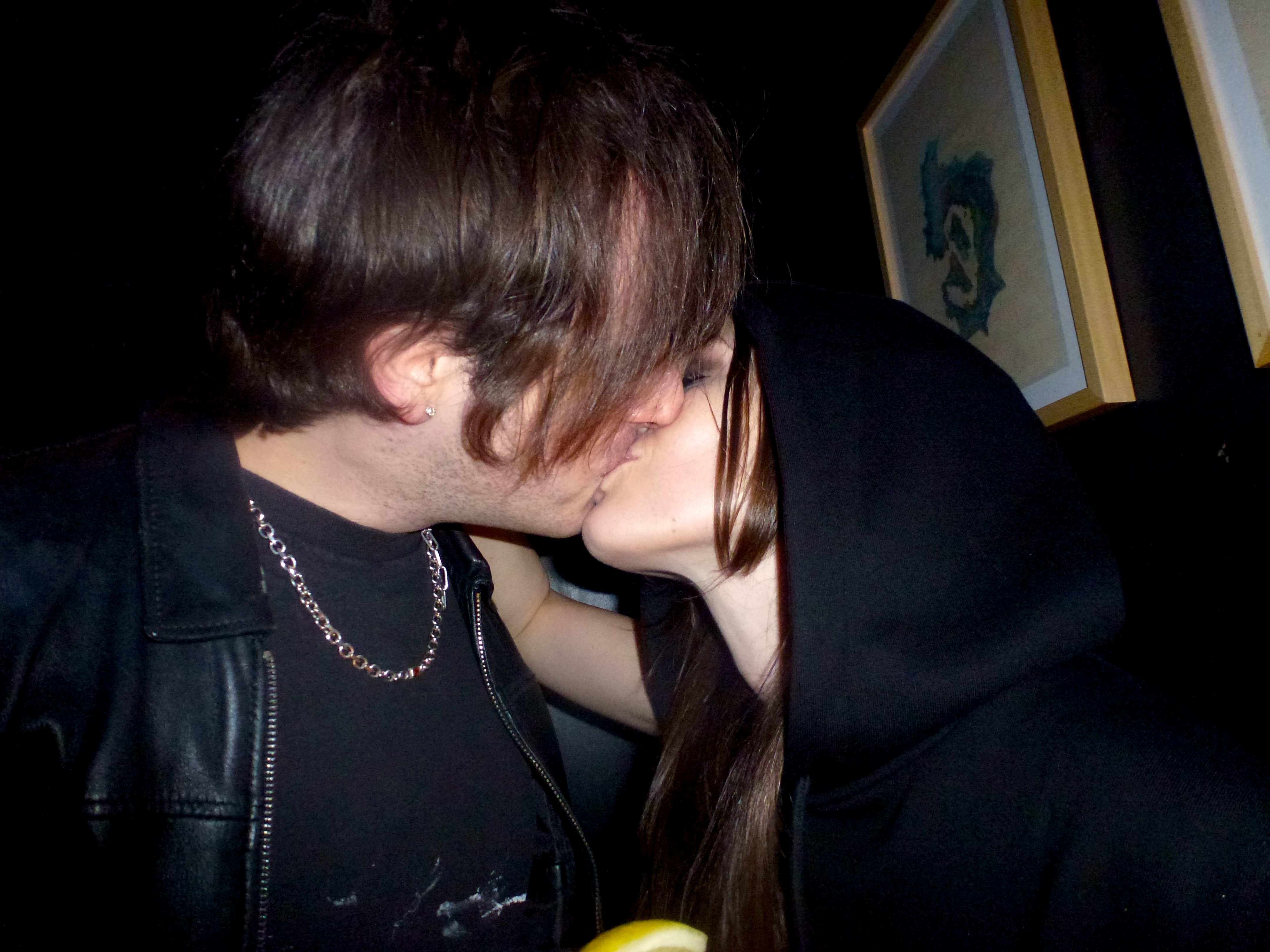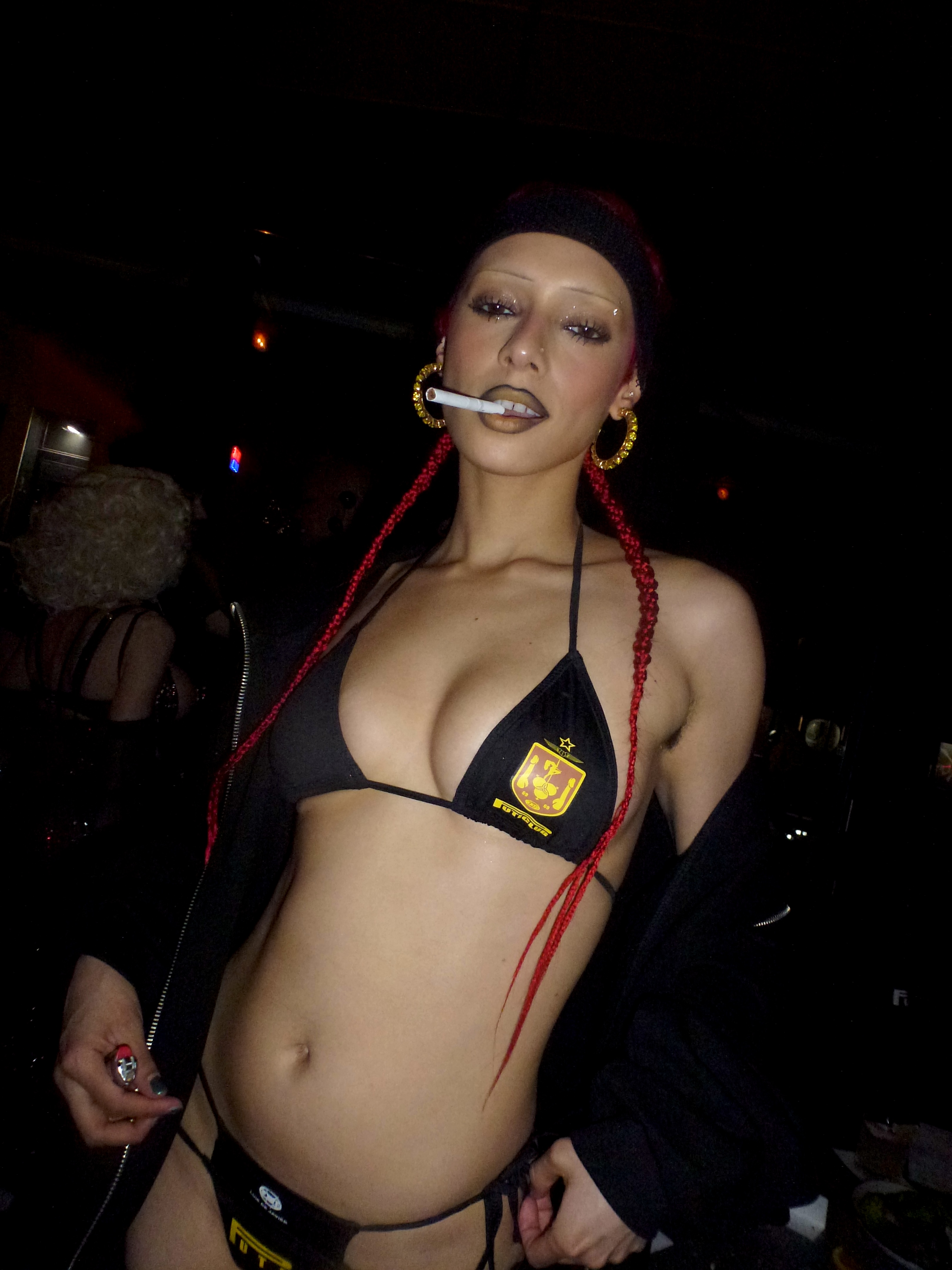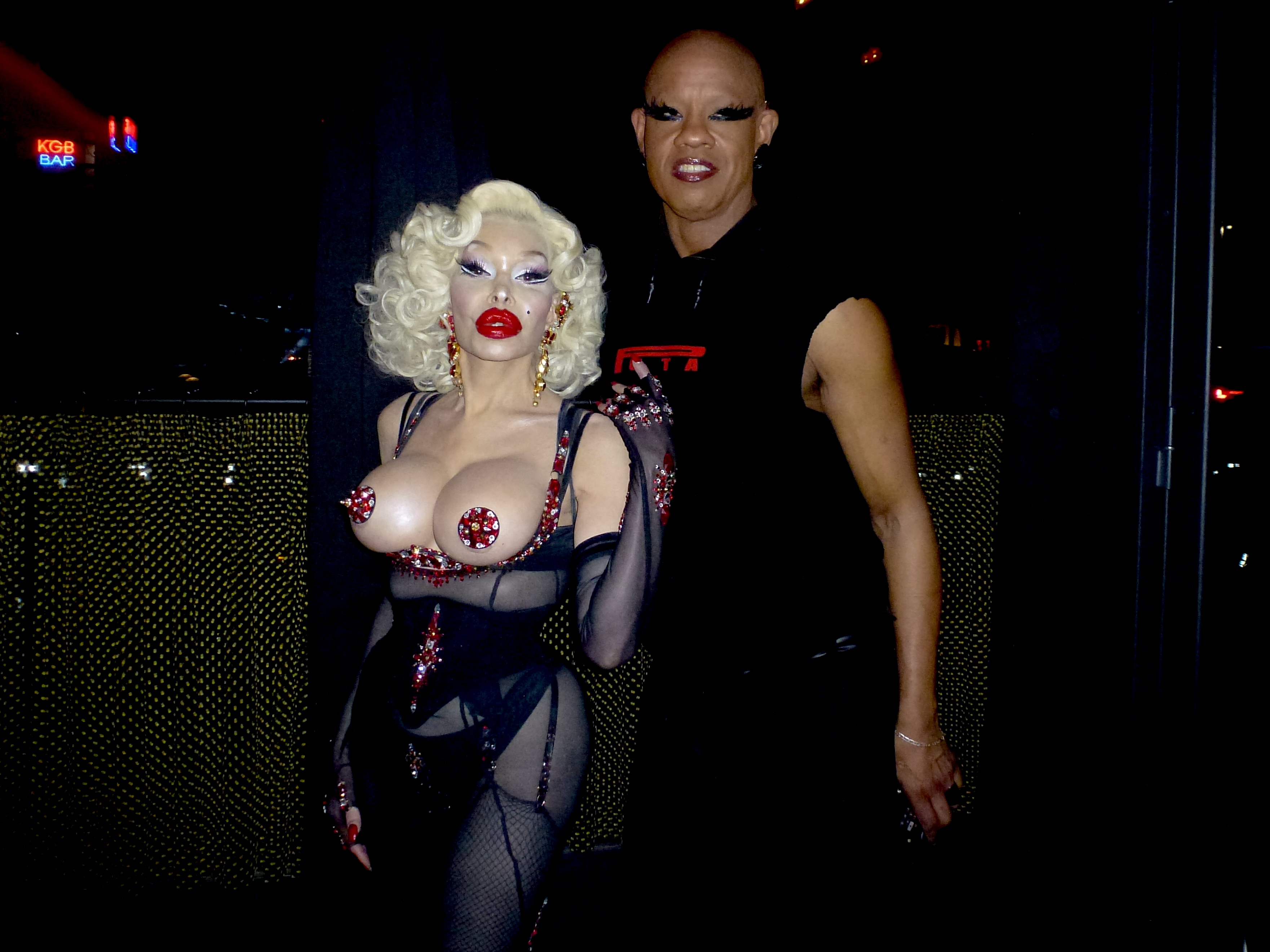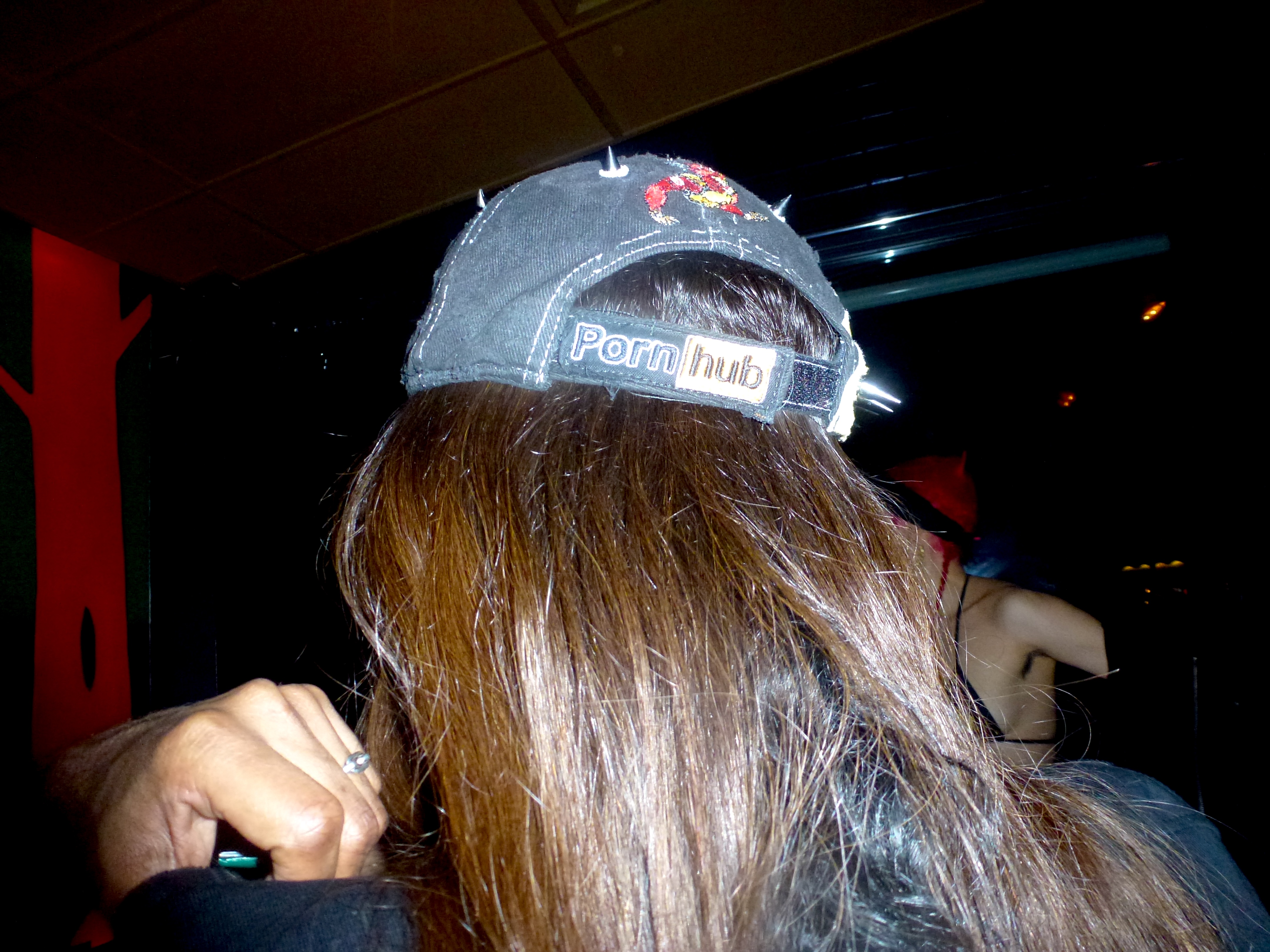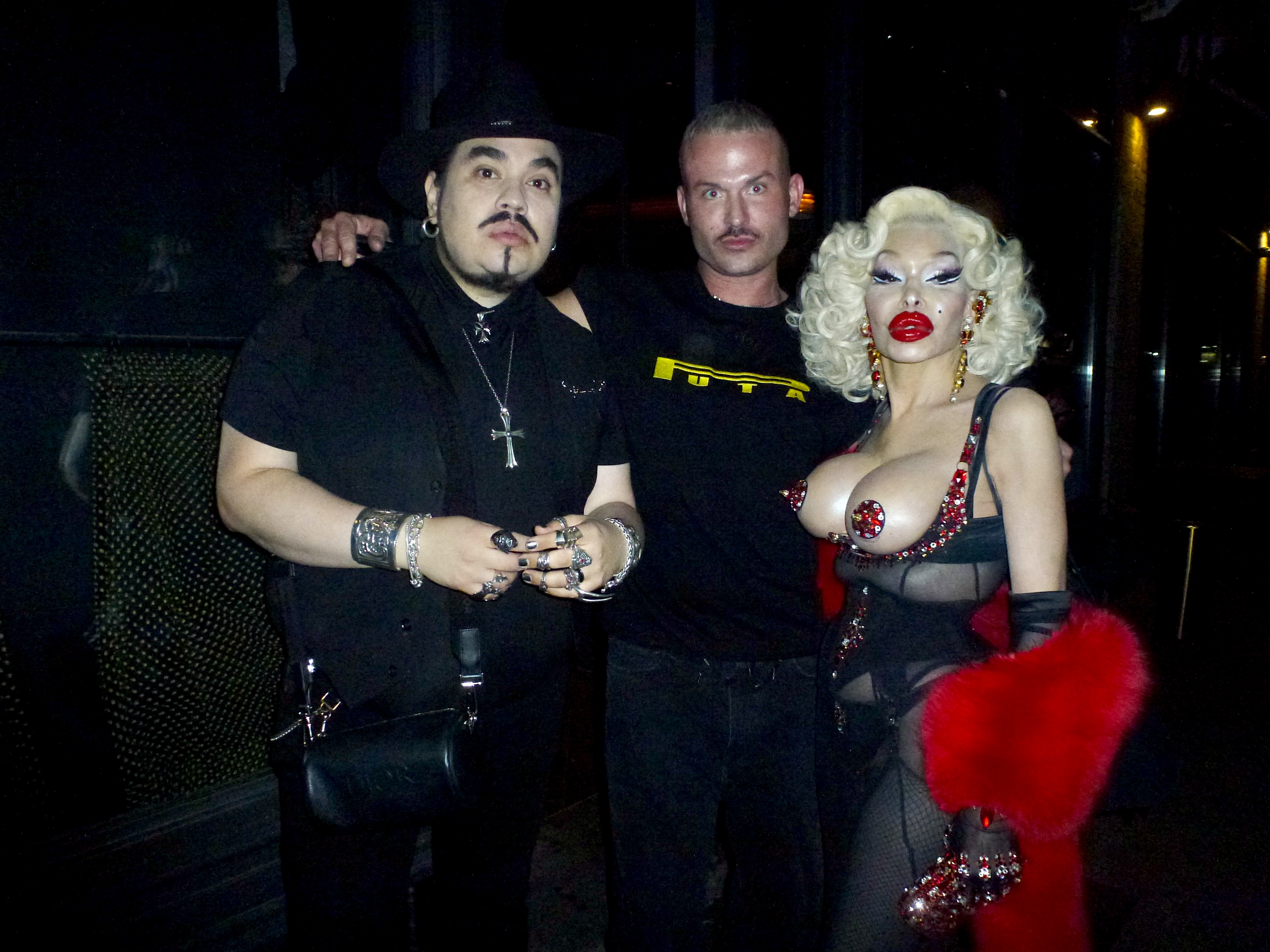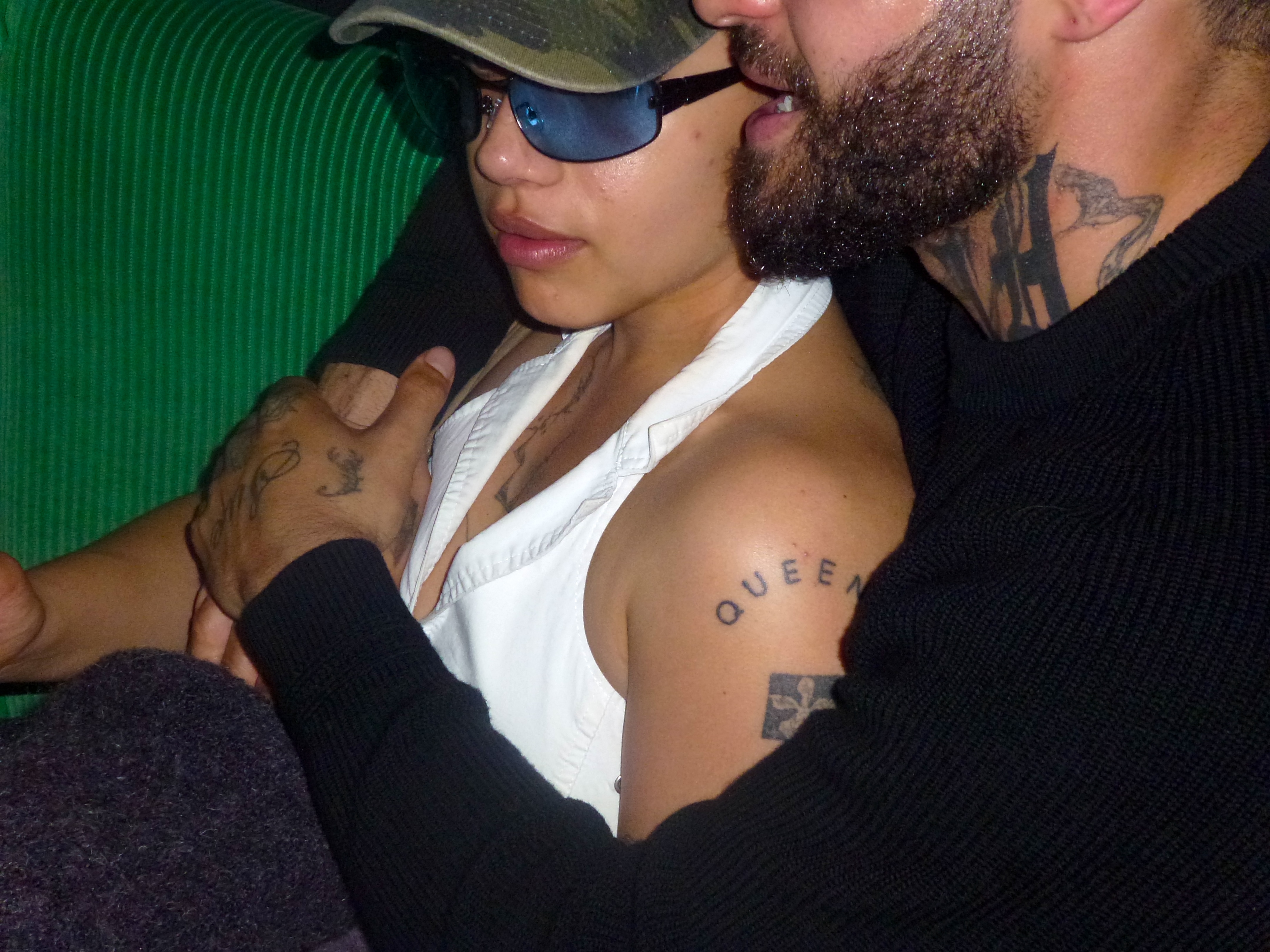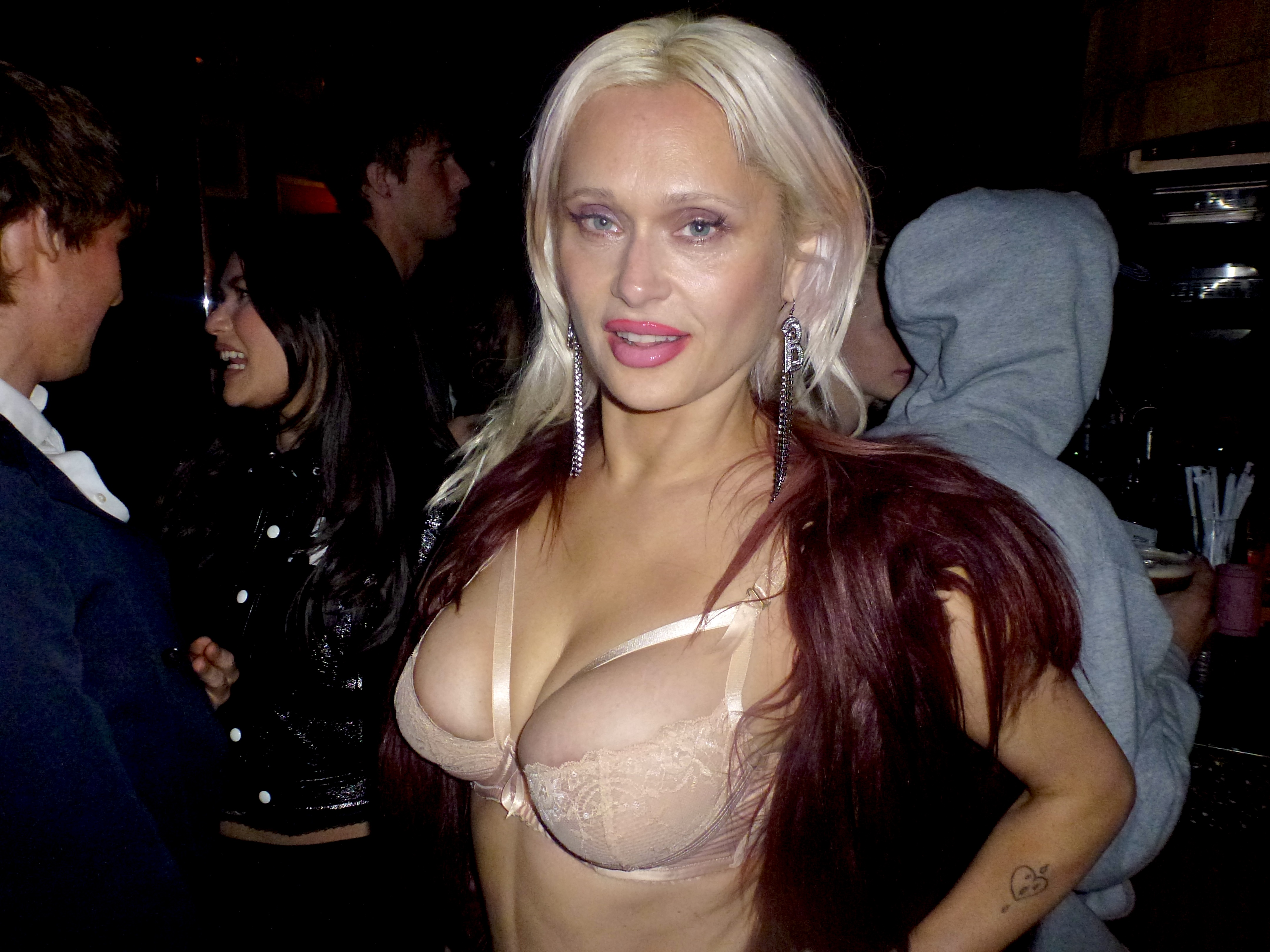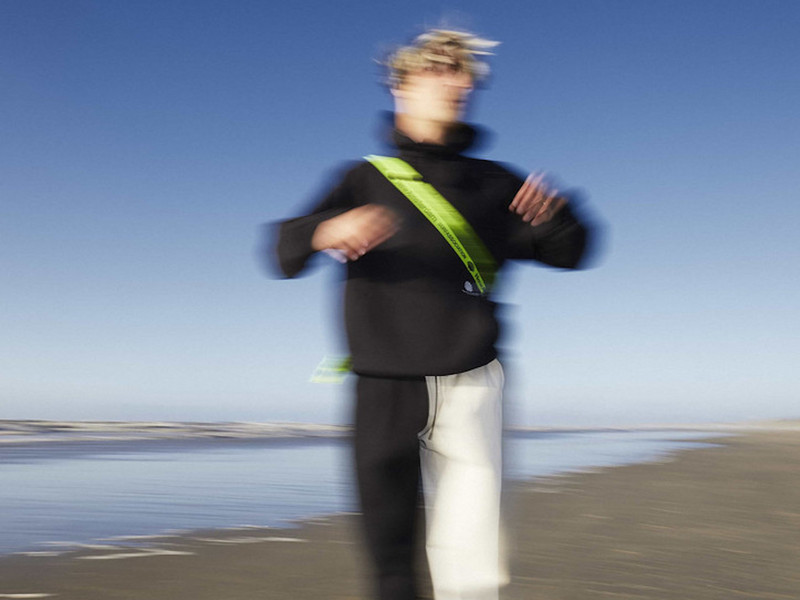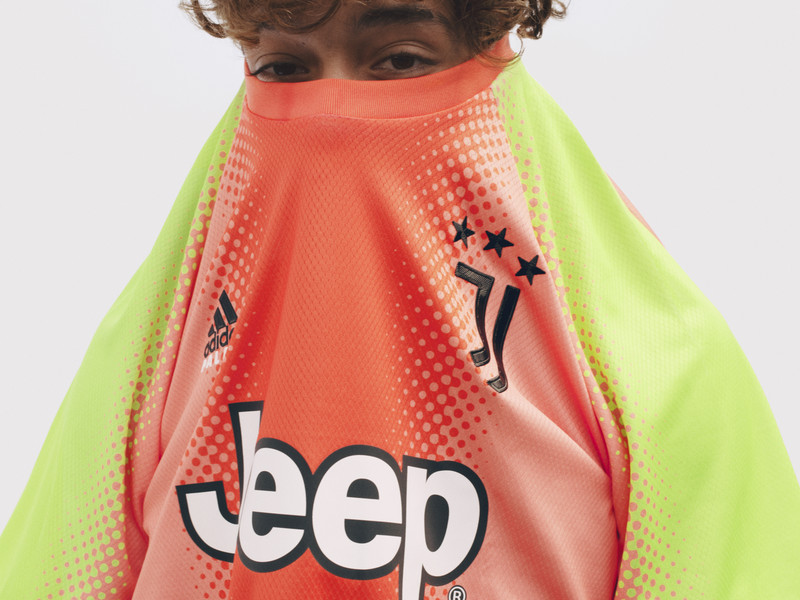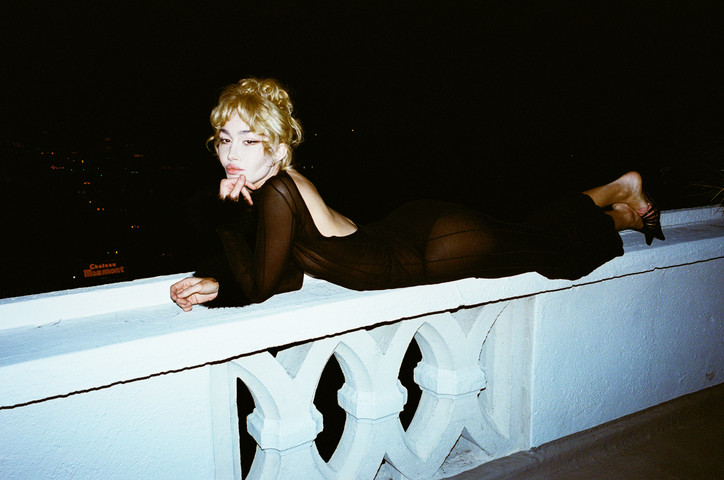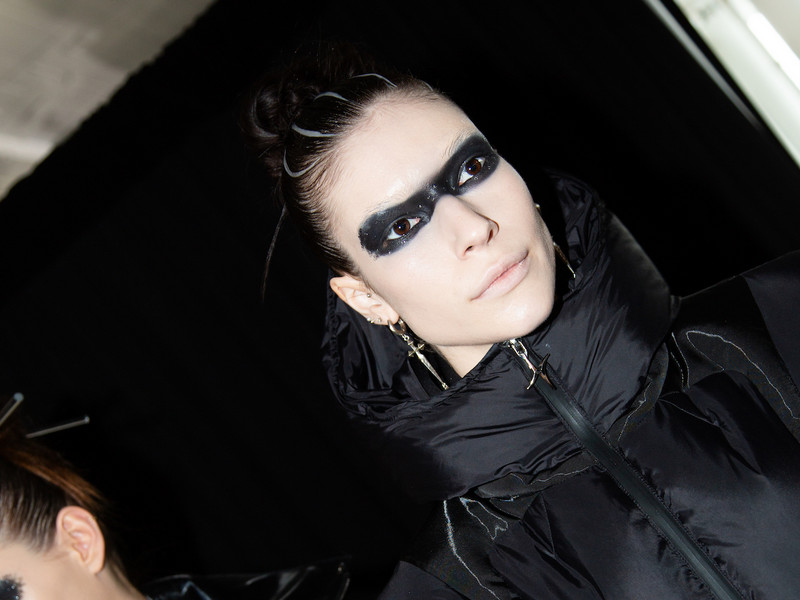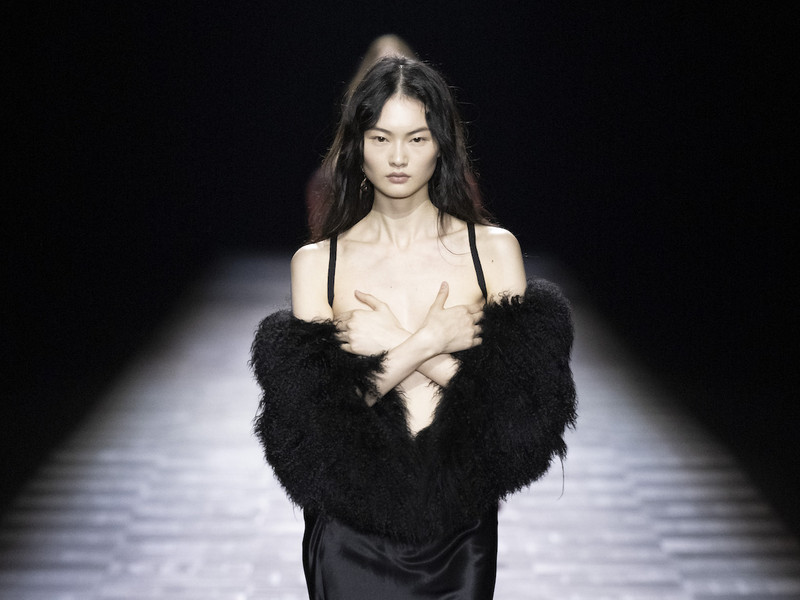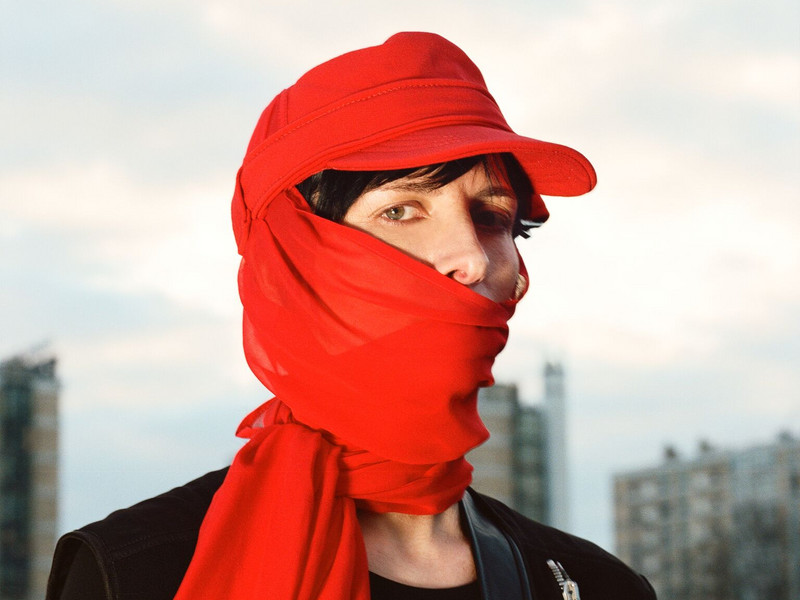Out of Office With Jane Wade

Days before we saw the show unfold backstage, office caught up with Jane in her Brooklyn studio to witness the final preparations and discuss what makes her brand so unique.
Everything’s looking amazing, Jane. Looking at this collection board, what elements do you feel give the brand its identify and make it Jane Wade?
I would say the core of the brand is cotton. I work a lot in cotton poplins. This is like a staple universe of the brand. Or these, the stripes. This season for our stripes fabrication, I'm using this washed finish. So it kind of gives it a vintage feel. And then all of my denims share the same brush and washed finish. I know you're familiar with these, but they just have a really soft hand. It adds an additional texture to it that feels really luxe.
Do you see these elements changing in the next few years?
Yeah, I really want to continue to thread in different techniques and figure out a way to fuse those two universes. I think this feels very utilitarian and this feels very handmade. I think the brand in general is bridging the gap between work wear and office attire. That's a theme we're always visiting, but then I want to continue that same conversation of bridging the gap between couture hand techniques and the ready to wear collection itself.
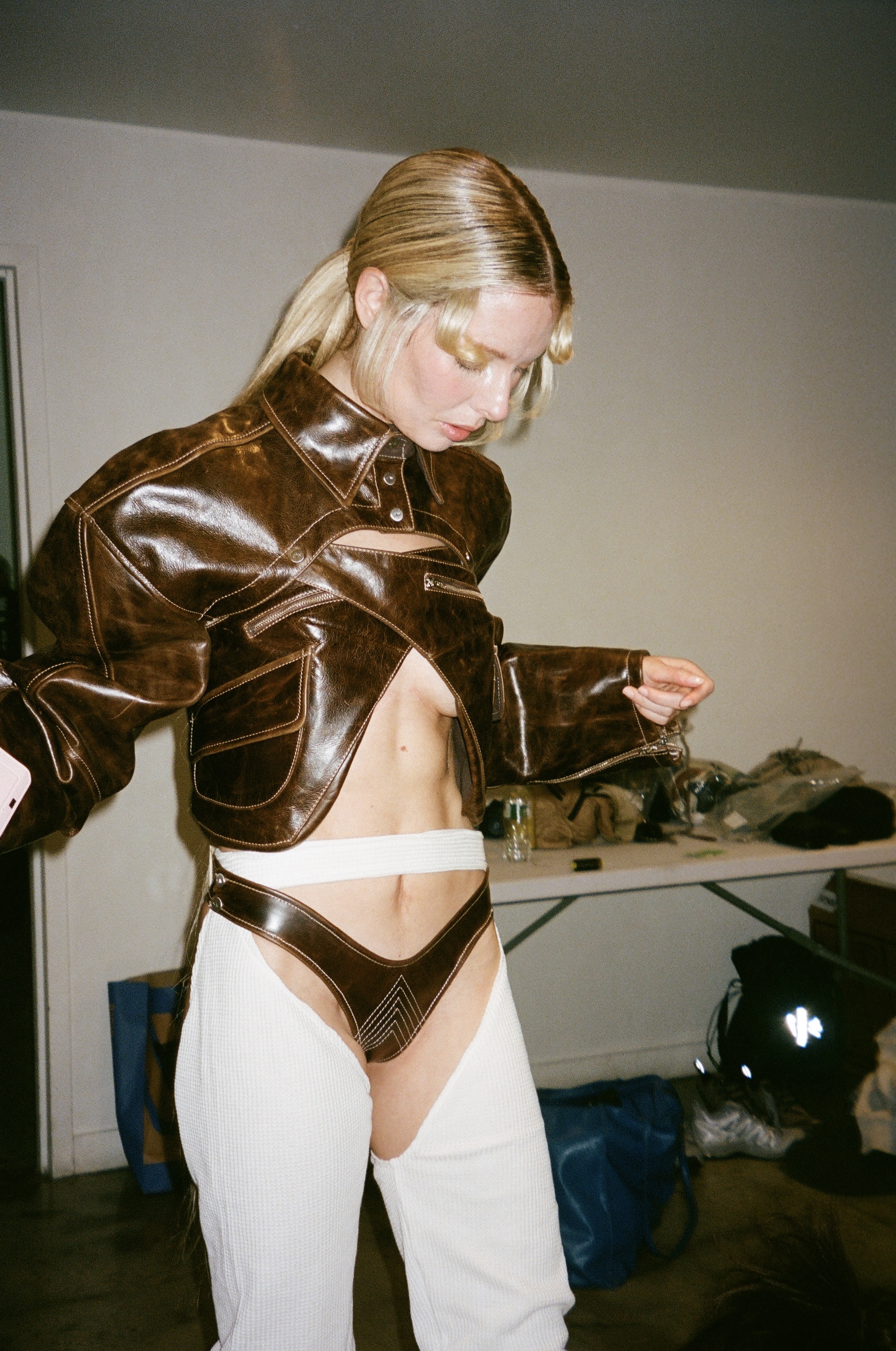
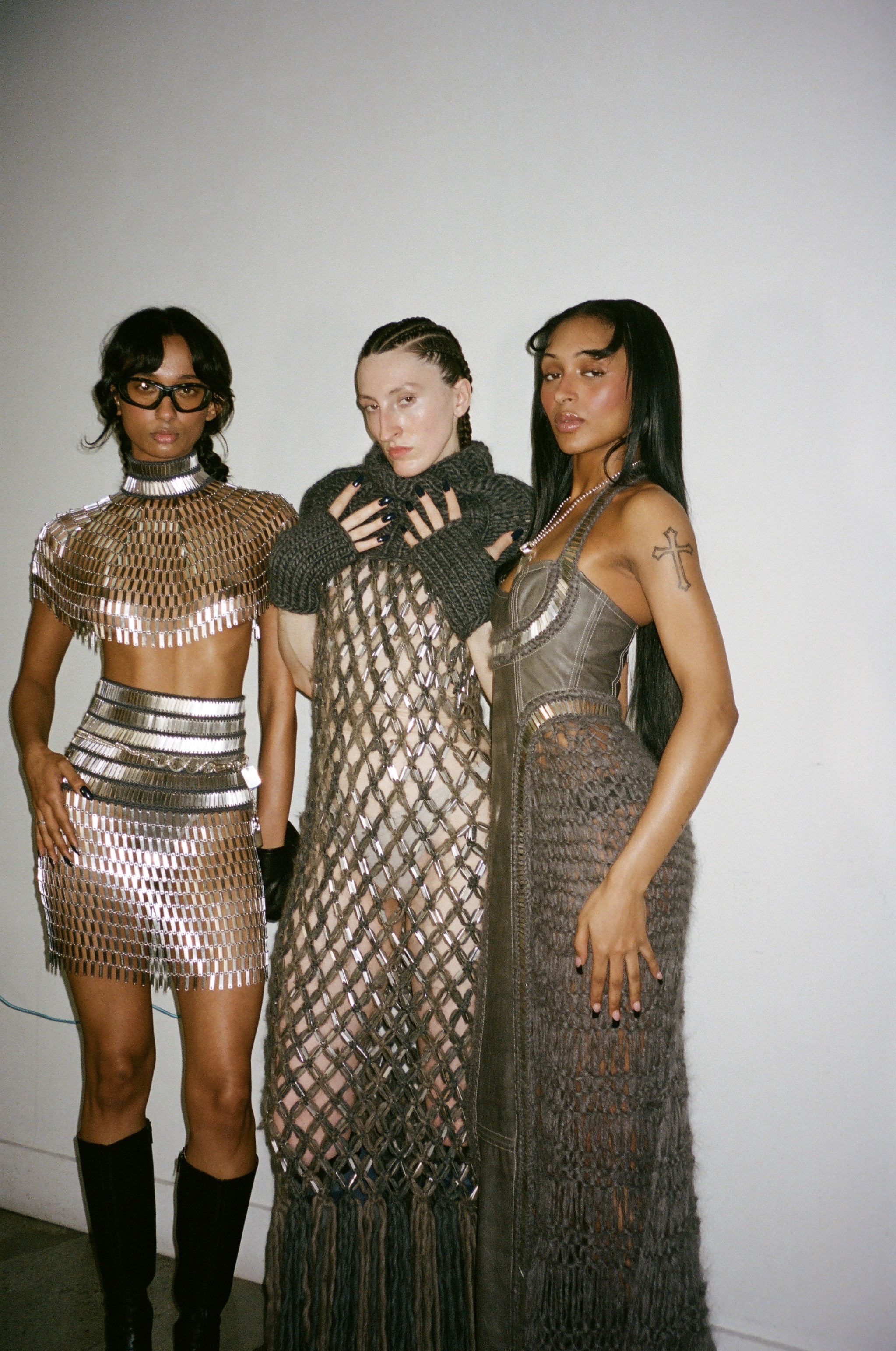
Are there things outside the design and fashion world that are inspiring you?
As an artist, I really try to not pay too close attention to what's happening in fashion. As a creative, I really look at the world around me and draw inspiration. I can show you my inspo board too. So that's kind where I start with techniques and then I move into sketching and I do a lot of iterations of sketching. So I start here on these, I call them the ‘mini croquis’. ‘Croquis’ is just the French word for ‘quick sketch’.
These are quick sketches? They’re so detailed.
[laughs] Yeah, these are quick sketches. I could do one of these in three to five minutes, depending on how complicated it is.
A whole page?
No, no, no, no. Just one sketch. Yeah, it takes me about 30, 35 minutes to fill a page. But I like to work in groups. So you could see here this is a code, and then I'm like, 'okay, maybe another version.' And then I'm looking at the back or I'll take a shirt like this and then I'll sketch it a few different ways until I feel like it's fully baked. And then once the idea is fully baked, then I move on to the final sketch. This is the one that goes on the pattern envelope to the pattern maker and they make the pattern.
Something I want to always do in my craft is master the technique. So patterning, at the beginning when I first launched, was something I would consider a weakness of mine. Pattern making takes years and years to master, but this season I really wanted to push myself to do more pattern work. So this skirt and this sketch, I've patterned that completely from scratch myself, and it came out really beautiful. So I always am seeking to really solidify and master the technique of designing when it comes to sketching and patterning. Not just being like, ‘here's my collage sketch and you go make it and figure it out.’ I really want to be an informed designer.
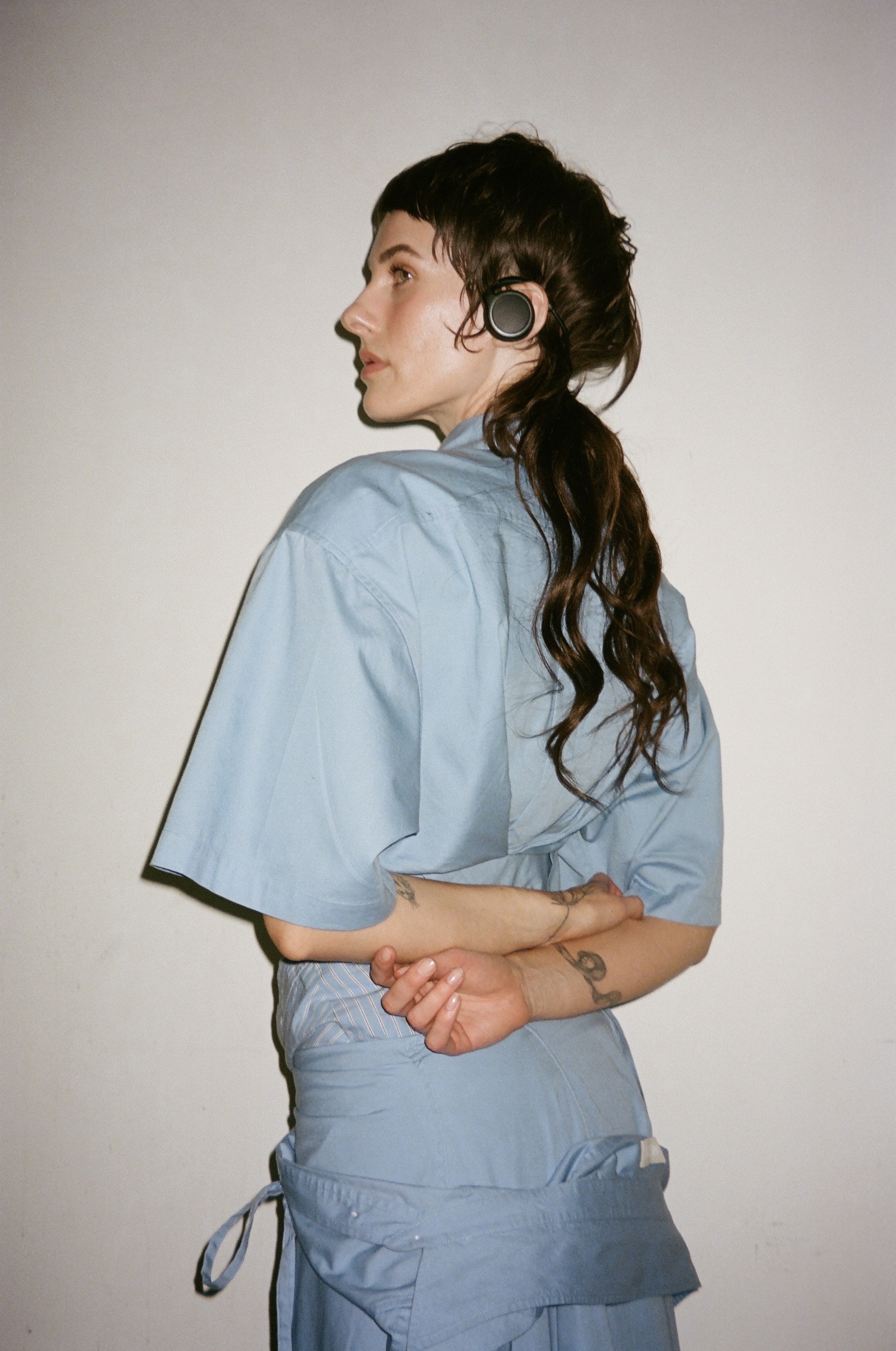
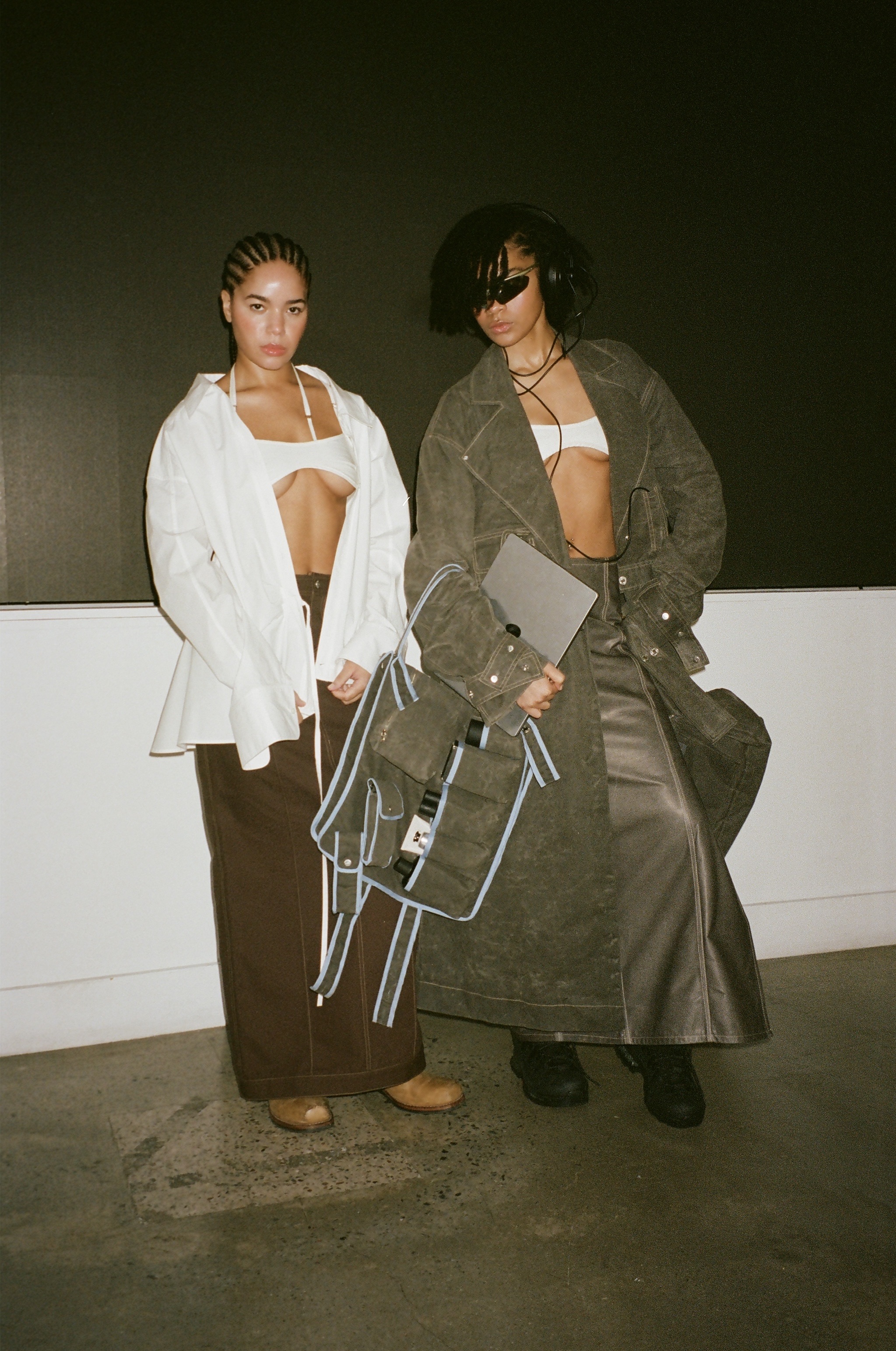
So from these final sketches, it's straight into the pattern making?
Yeah, exactly. So then it goes onto a pattern like this and everything gets patterned flat onto paper, and then when it comes back I send it to the sample room and have it sewn. We don't sew too many things here because something I've seen a lot of small brands really struggle with is making their samples in house. And then when the buyers come to look at it, the quality isn't reflecting a luxury market. So, when I first launched the brand one thing I really wanted to separate from my in-house atelier was making the final samples here and it was one of the smartest moves I could have ever made. The best investment is the samples because, truly, the lifetime of these… even when they go to the showroom afterwards, they go to VIPs, they go to celebrities. Down to every single person that sees them, it's a reflection of me and the quality of my work. So really spending the time to invest in the samples has been a huge asset.
So where do they get sewn?
They get sewn in midtown. Everything's made in the garment district. I have a factory that I've worked with for over five years. When I started as an intern at Wang, I would run things to them and I became really close with the factory owner. And then when I went to Danielle Frankel and was designing there, the same factory did all of our development and production sampling. So I just became really close with her and when I told her I wanted to launch my own brand, she was super supportive and I think that that's another beat that a lot of emerging designers miss is not investing themselves into those relationships and having those relationships that are going to push you and your brand forward.
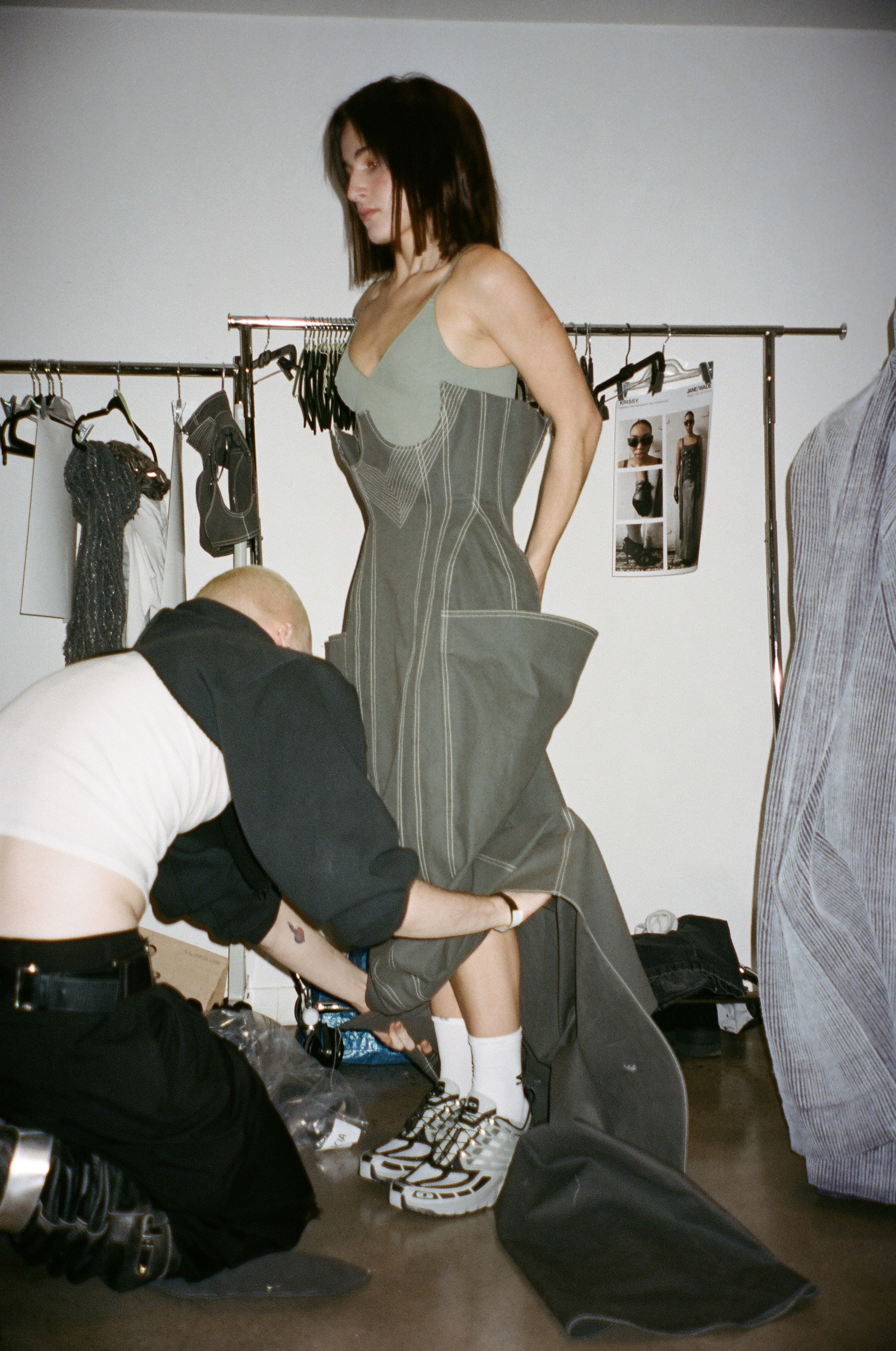
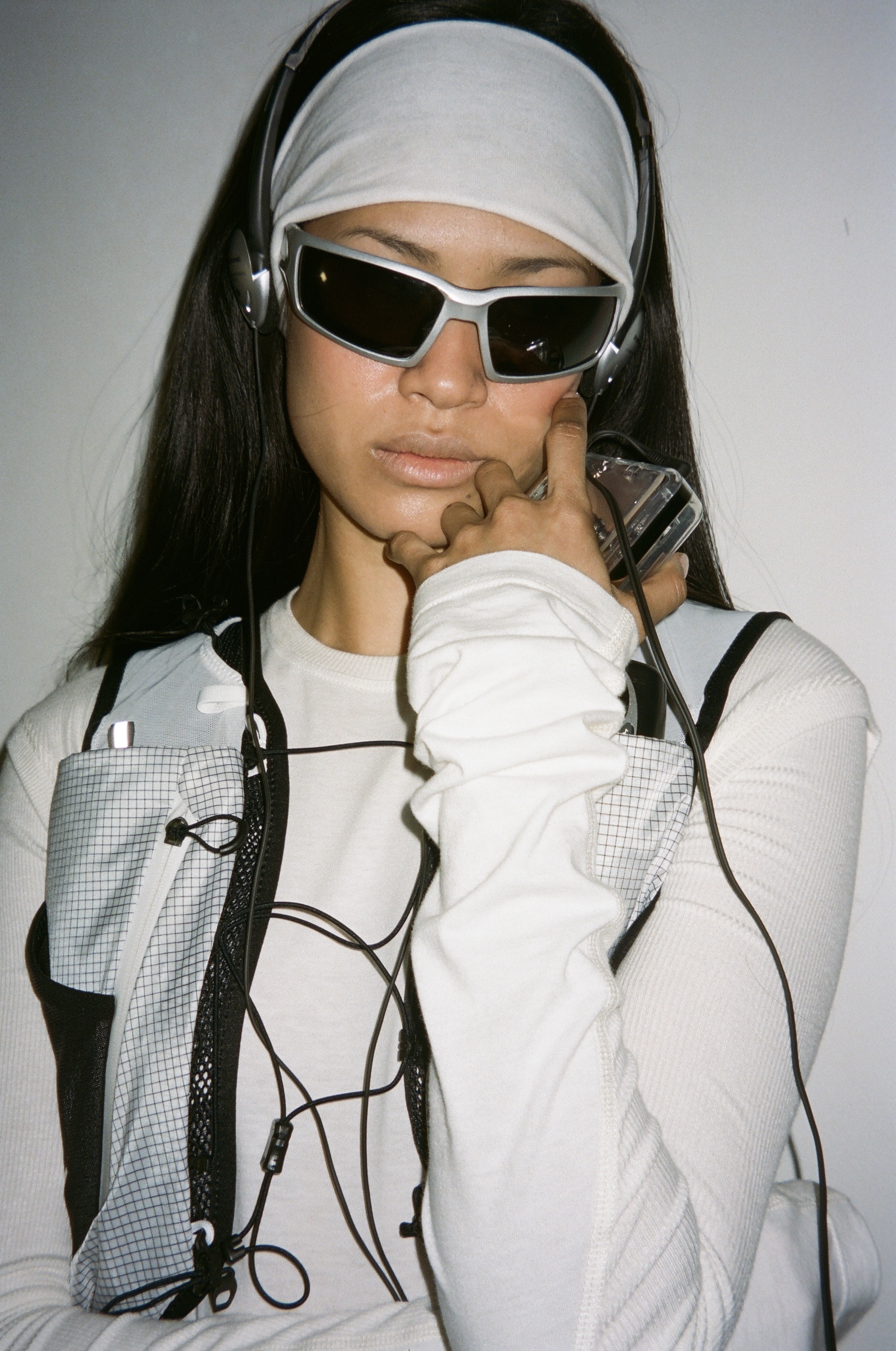
Where have you felt most creative in the process this season?
I would say these hand techniques are where I really thrive. And I think that's really what's going to ultimately set me apart in the New York market. I think that New York is so heavy on commercial work, especially with our luxury heritage houses. There's not a lot of hand techniques. You see that more in Europe and in Paris and couture week. So I think something that I want to establish here in New York and in my universe is this handcraft.
I think the challenge for myself next is going to be to let it naturally communicate with the rest of the commercial collection. At least that's how I feel internally, that sometimes there's a little bit of a disconnect between how some of the more high concept editorial pieces with the hand techniques communicate with the more commercial aspect of a collection.
I wanted to ask about the role curiosity plays in your work. I feel like you're big into exploring anything and everything.
So one thing I wanted to talk to you about is how my relationship moves through the collection development with Joe. Joe is a stylist by title, but in relation to me and the brand, he really is a co-creative director. And we start from the very beginning. Once a collection closes out, stops on the runway, we begin building the next collection concept. And so from that it's like weeks and weeks and weekends of us spending time together to develop what the storyline is going to be, what we want to say with it. With this specific story, I really wanted to speak to my own heritage and how I grew up. So I'm sure you've been seeing some of the rollout. It's very mountain based and outdoors based. That's how I grew up. I'm from Portland where in that part of the country, it's all outdoors. People don't care about fashion at all.
Last season you said film was a big part of your process. Has it been the same this season?
You know what, it hasn't. I would say last season I really had to draw a lot from outside sources, whereas this season I wanted it to be a much more personal approach. When it came to the creative direction of the show, we were looking at some films. One of my favorites, which is a little controversial, is ‘Memoirs of a Geisha’. It just has beautiful lighting and beautiful set design with this one scene where it's very snowy and it has this very dramatic blue lighting, which is very much in my universe. So in terms of visual direction for the show, we did do a little bit of film research, but this season a lot of the development of the collection and the concepts for the show are more interpersonal and introspective. All of those little details are more paying homage to my childhood and how I grow.
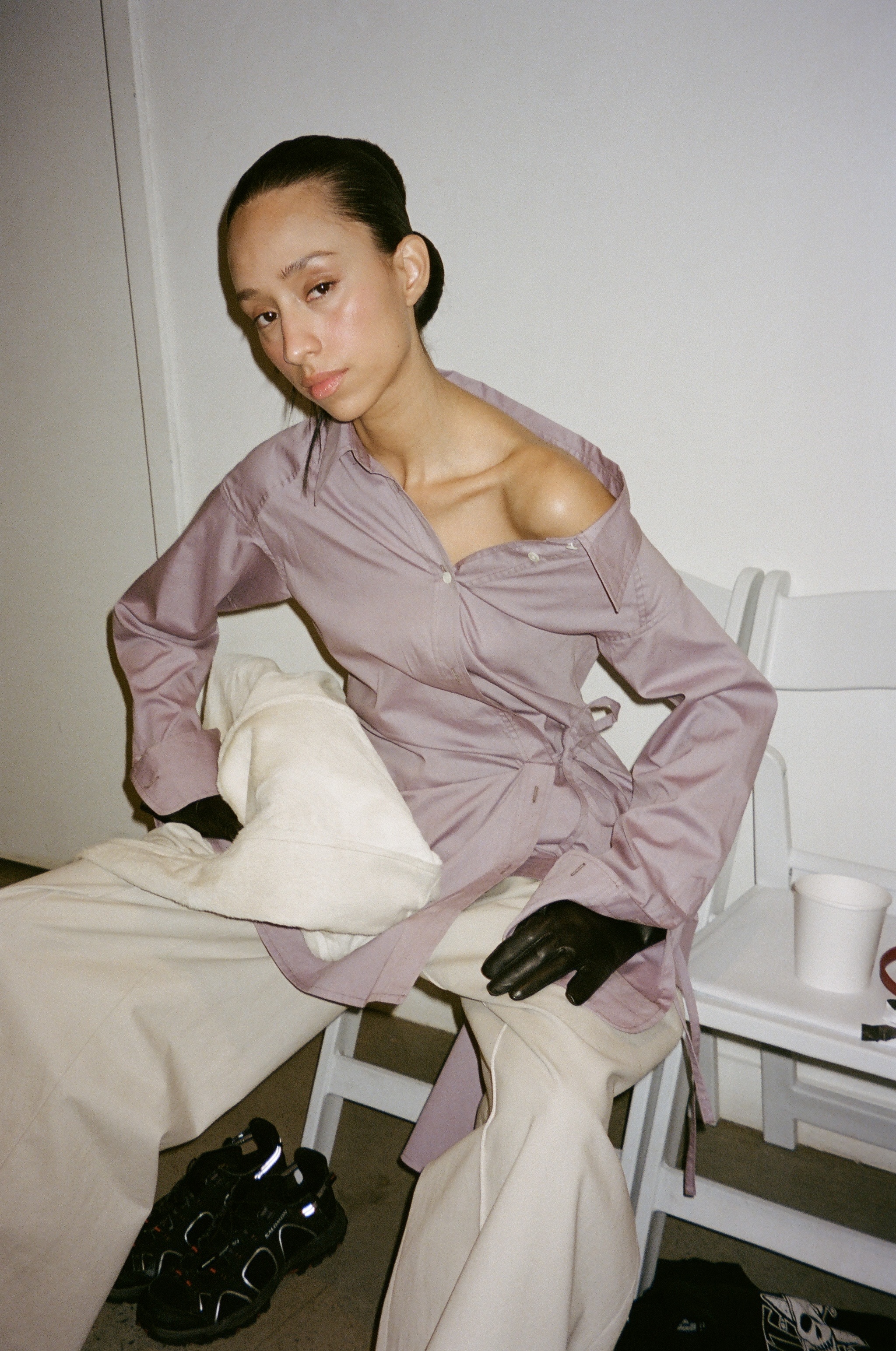
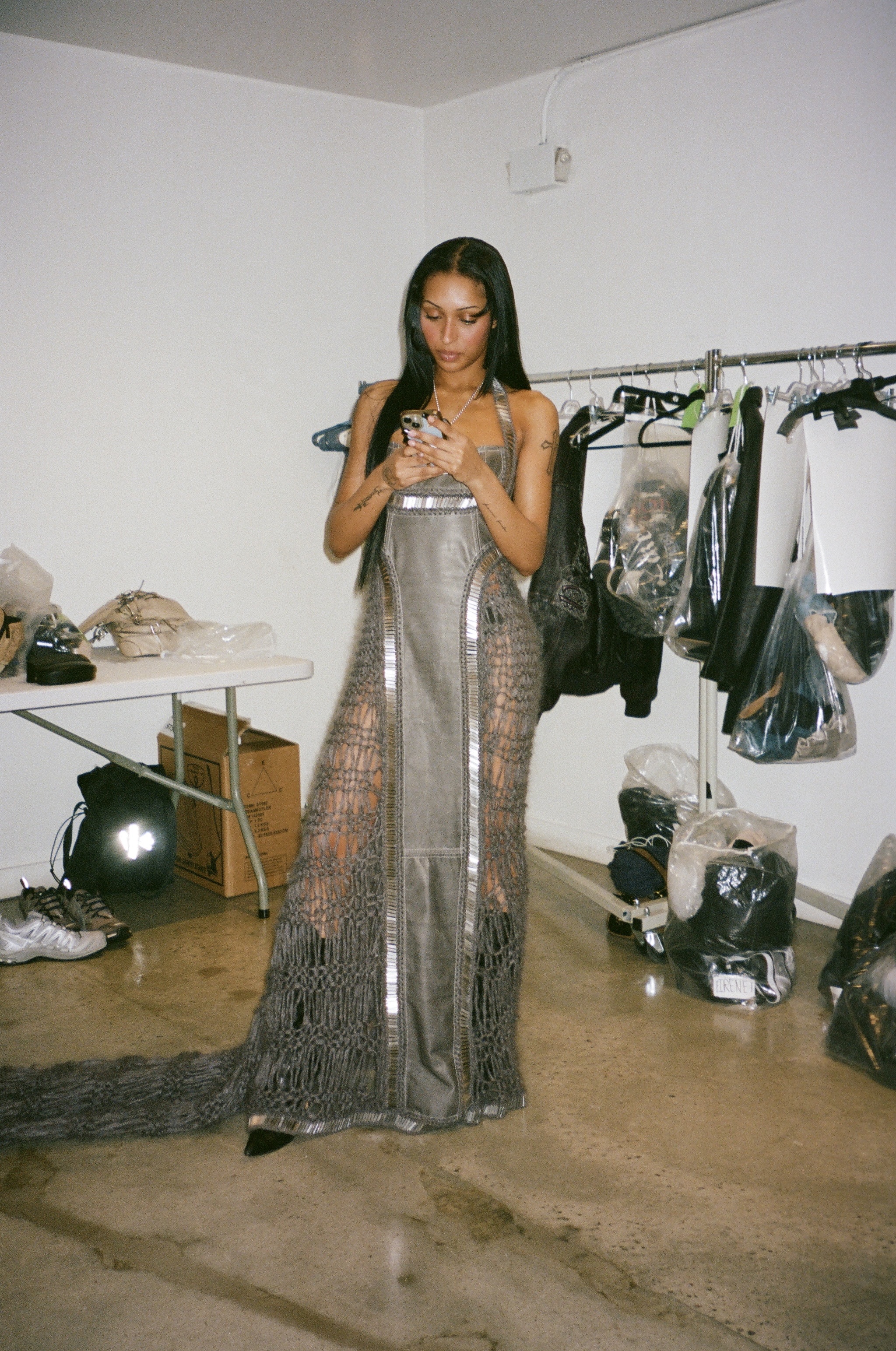
Is it true your mom worked in a hair salon? Did that influence your creativity?
Definitely. Both my parents actually were hairdressers. That's how they met. My mom's salon burned down the first year that she opened. It was attached to a restaurant and my dad was a hairstylist but also a contractor. And so she ended up in the same salon as him and then they started dating and he ended up building their first salon when they got married, which was called Wade and Wade. Yeah, so that's actually where the utility and disheveled tailoring comes into play. My dad was very much into Dickies, Converse, Carhartt.
Like workwear?
Very workwear. Utility belt, that kind of vibe. White bandana. He was very much, for lack of a better word, white trash. And then my mom comes from a very polished background and she would wear Comme des Garçons and she would buy deconstructed tailoring and that's what she would be wearing to work. Like very polished but current and effortless; almost like a corporate style. So, I feel like growing up and seeing those two uniforms definitely informs how I'm communicating with garments. I definitely get my creative hand from my dad. My mom is much more of a technical worker. She's very technically trained when it comes to doing hair, but my dad is the kind of person who paints, he plays guitar, he taught me how to play instruments and we kind of bond over that more creative side.
Just kind of going for it and figuring it out later?
Yeah. So, it's nice that I have pulled from both of them. I get this more analytical type A from my mom's personality, more mechanical. And then from my dad I get that very naturally inherent, tactile hand to just execute more of a conduit flow when it comes to creativity.
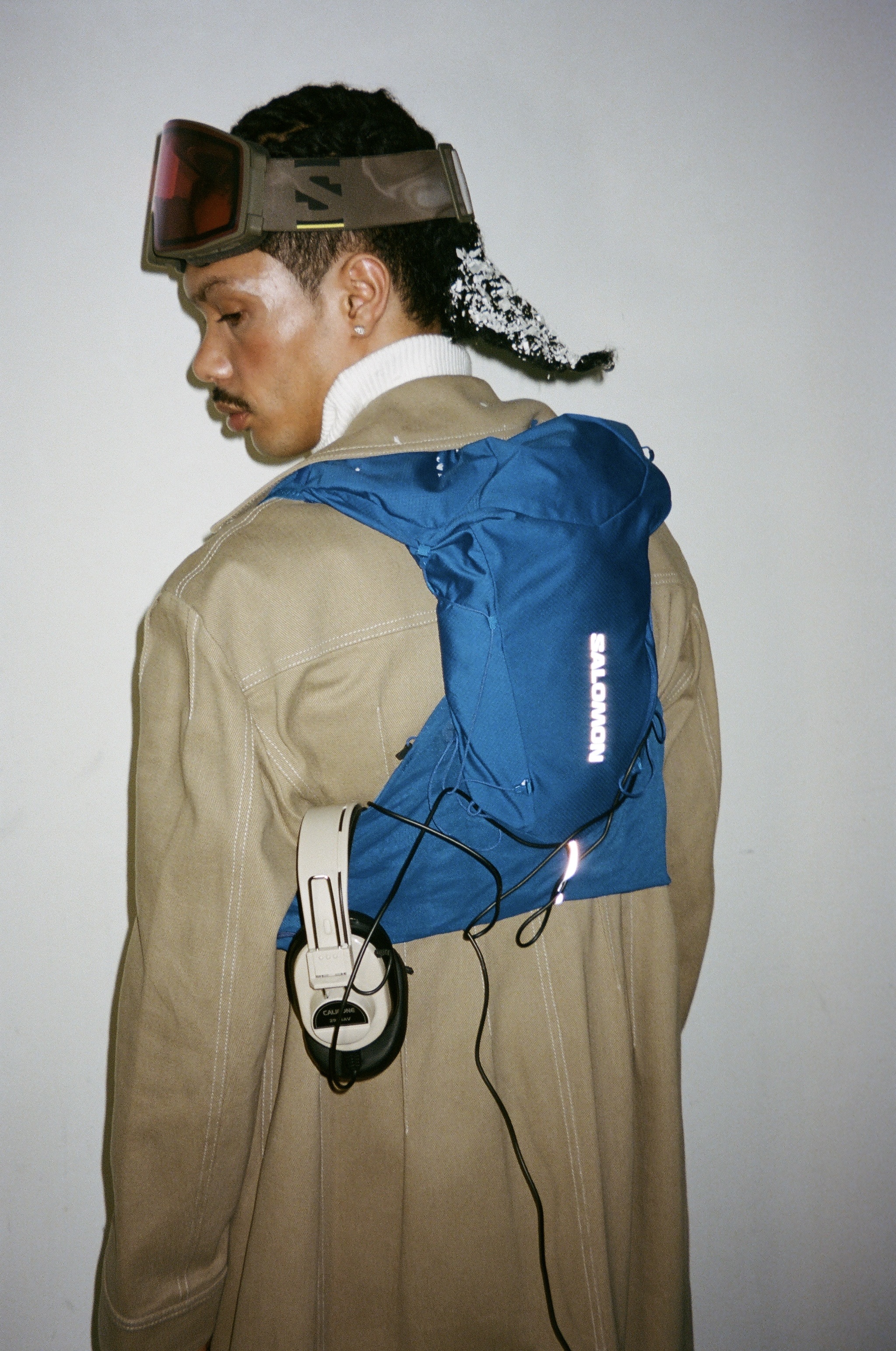
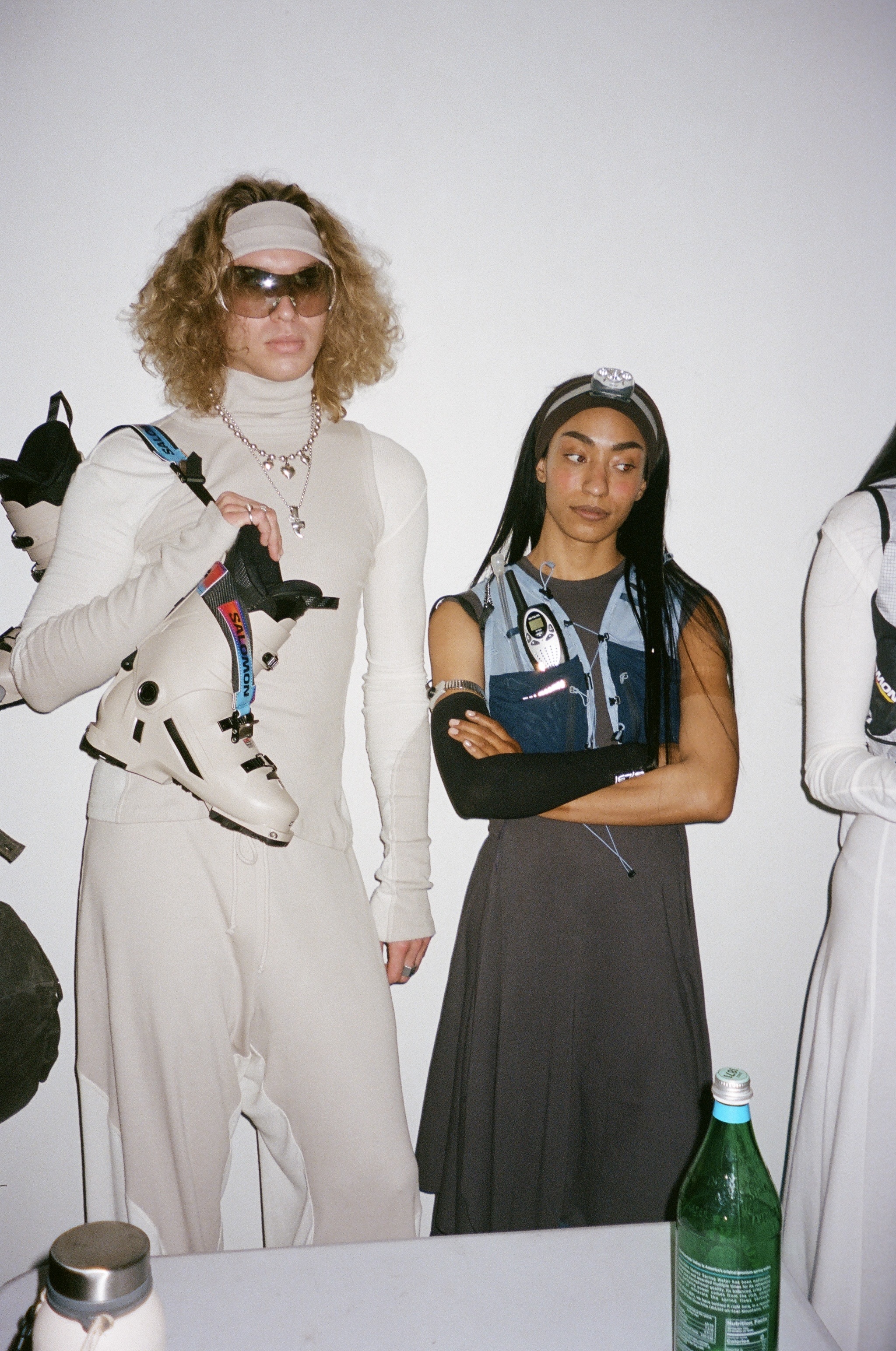
Is there something you want to say with this collection? Something you want people to take away from it?
I think what I want people to take away from it is making space to return to nature because such a huge part of how I grew up is not taking everyday life or your work or your career so seriously and being able to really return to your roots. Something I practice a lot when I go home is going to hiking spots that I would go to as a child. There's an amazing amount of national parks in Oregon. I think in New York it's so easy to just hit the pavement and be in the grind. So I think what this collection is trying to say is that there's this liminal space between being in that expedition, being outdoors, connecting with yourself, reconnecting with nature, and then still having the capacity to work a nine to five job or participate in this machine era that we're all existing in.
Is all the jewelry Martine Ali?
Yes. Martine was actually one of the first people to push me into fashion and encourage me to make the brand. Martine was like, “dude, if i can do this shit, you can definitely do this.” And so it gave me a lot of confidence and taught me how to be a good mentor. I feel a lot of responsibility for teaching other people and giving them opportunities so that they can go out and get a job in the industry. I just think fashion is such a gatekeeping kind of industry, so it's really refreshing to come across people like Martine. That’s where I did my first internship when I came to New York and now she's watched me through my whole journey and we get to participate in this together every season. It's such a beautiful moment that we get to share.
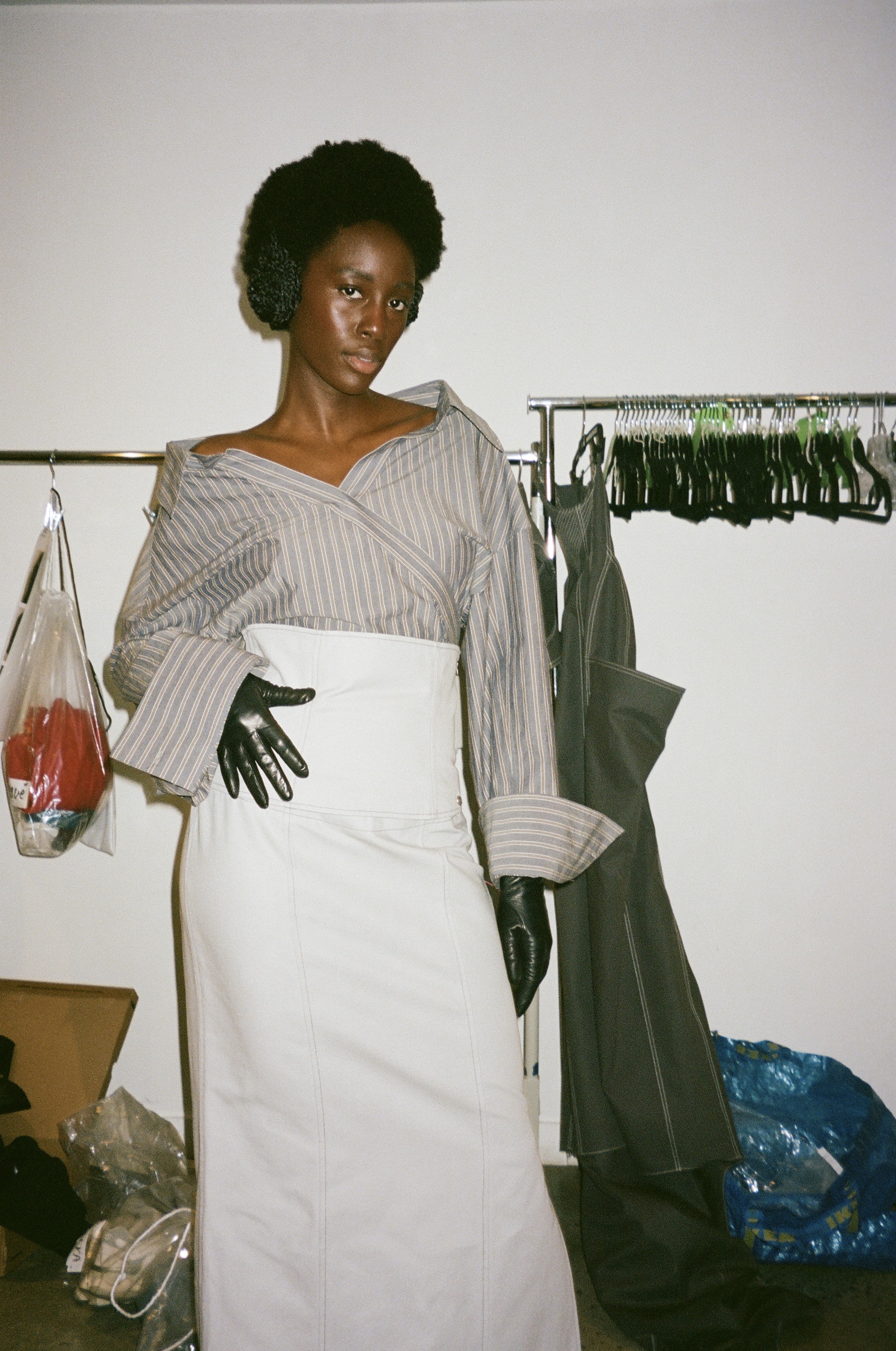
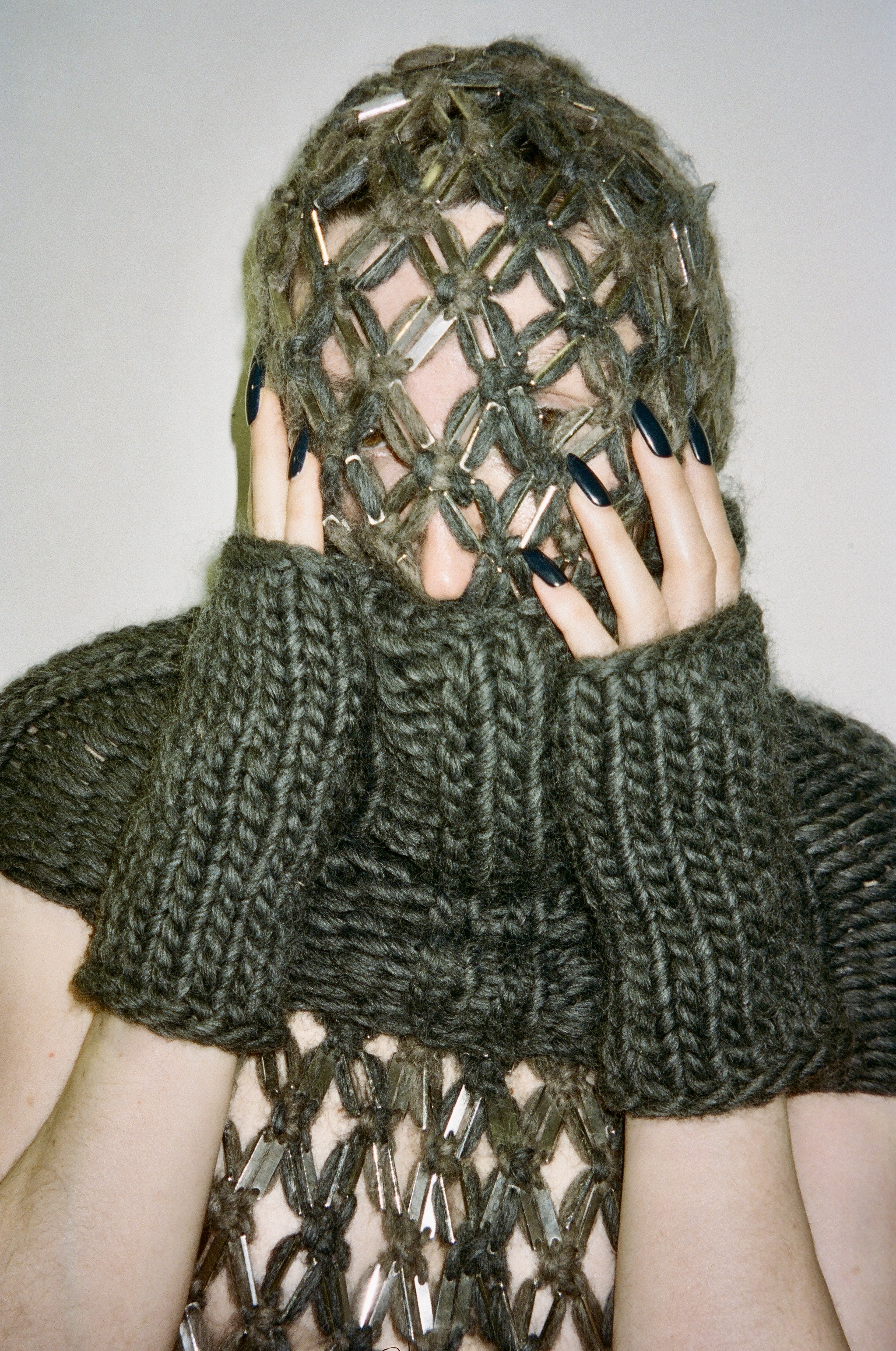
You had formal design training right? You went to school for it?
Yeah I went to design school for fashion.
In New York?
No, in the Bay Area at this school called the Academy of Art. Yeah, I actually wanted to go to college to be a painter.
Do you still paint?
I do still paint. I love painting. I do oils and watercolor.
Does your painting ever merge into fashion?
Not yet, no. But I would like it to someday. I just feel like textile isn't the right fit for the stage that the brand is at right now. But I would like to eventually do it. That's actually a lot of what I did at Danielle Frankel was ink paints on fabric and then scanning them and then turning them into prints that we would then turn into techniques and then into gowns. So it's definitely a skill that I have and would like to eventually use, but…
It doesn't fit right now.
Yeah, similar to the hand technique thing, it's about figuring out a way for all of that stuff to fit into the commercial aspect. To do it effortlessly. I would honestly like to use some more of my handcrafts. I also do music, I play guitar and piano, so I would like to integrate all of my crafts. I honestly weirdly feel like fashion isn't my last stop. I think I'm going to do a lot of other things at a later phase in my life. I just think that this happens to be my vehicle right now.

